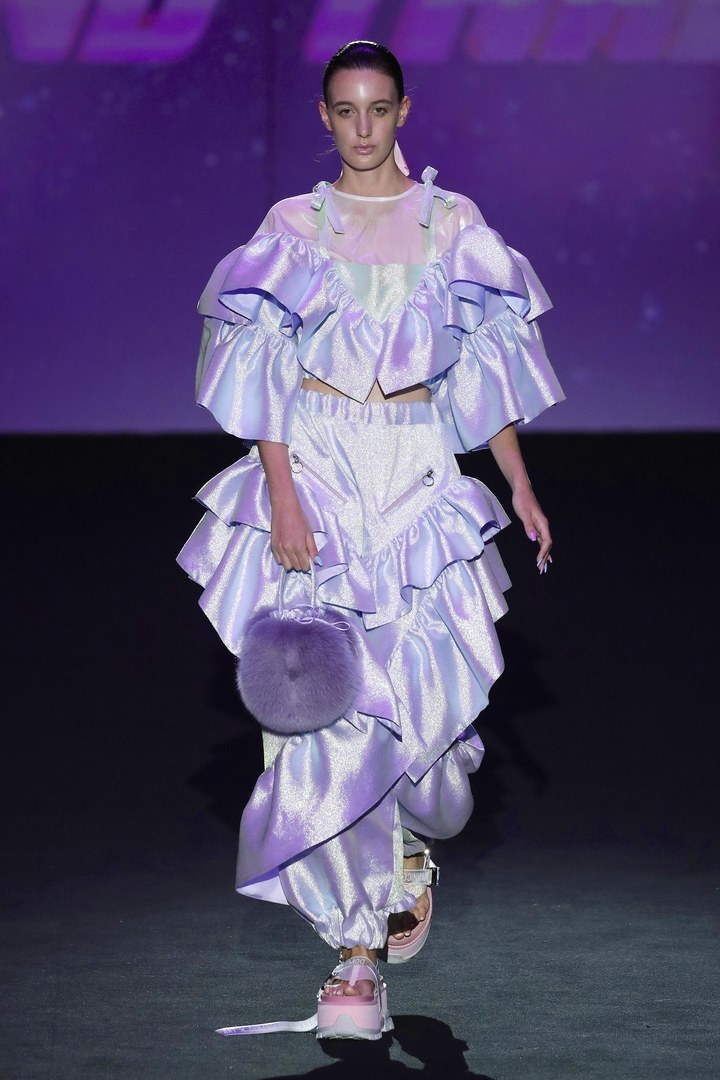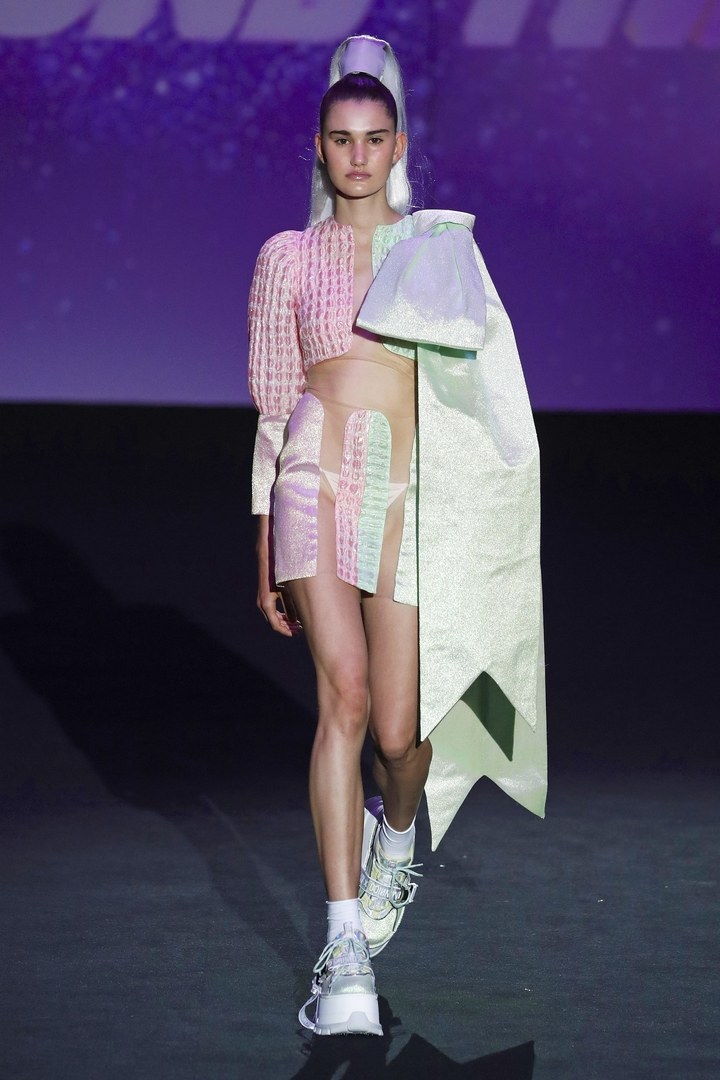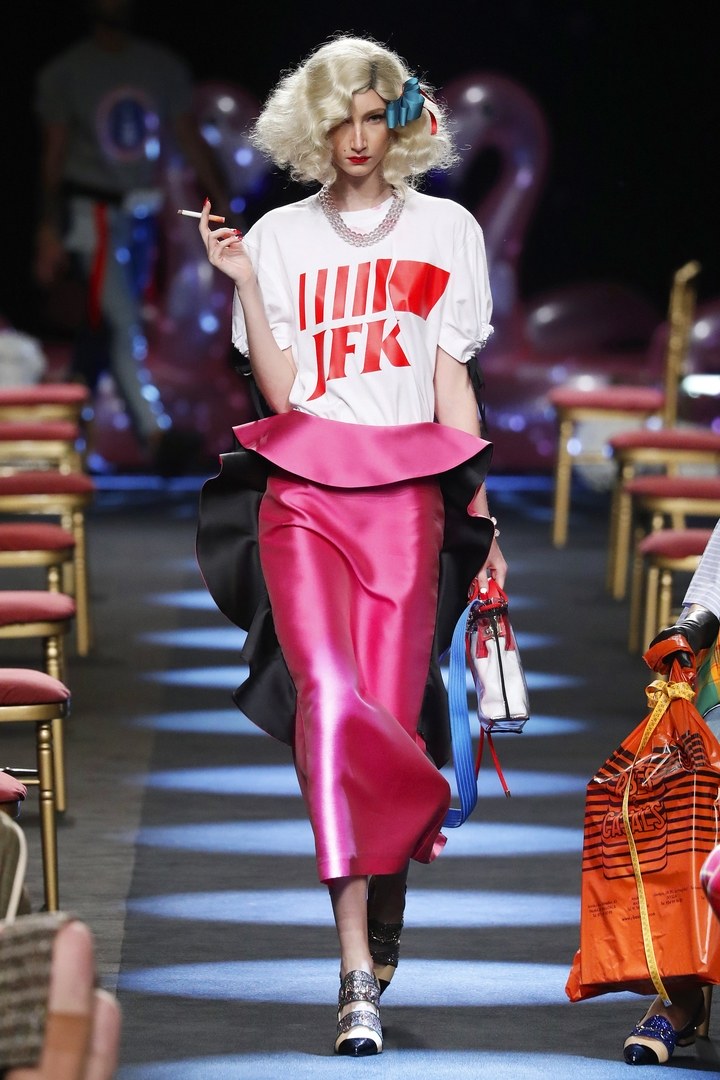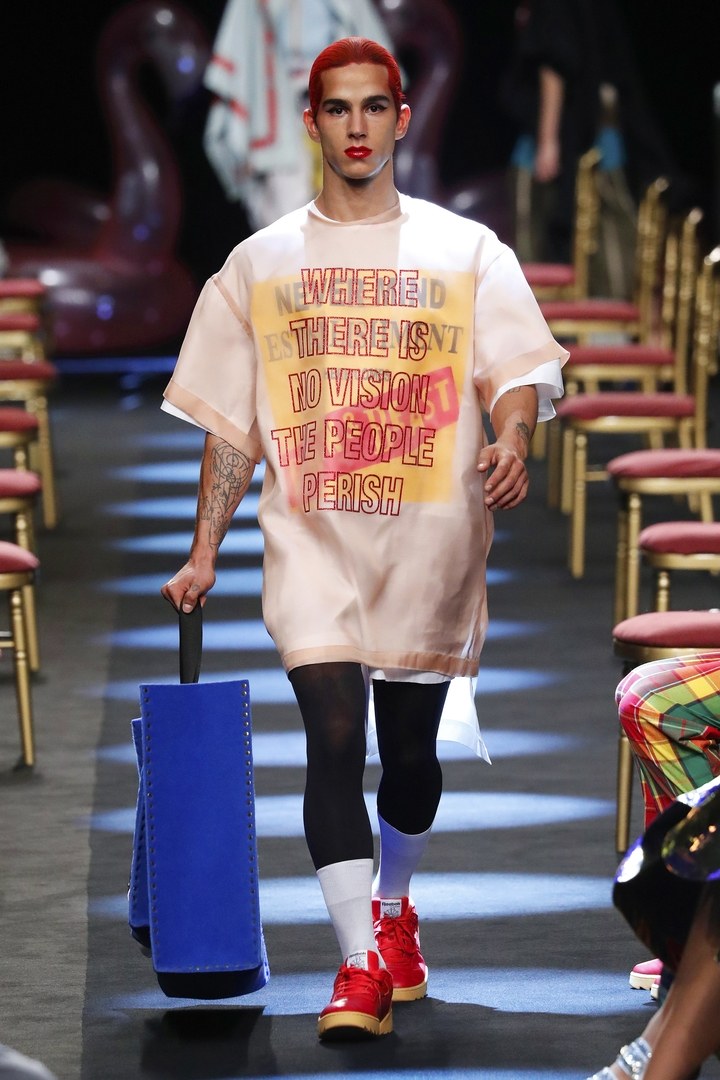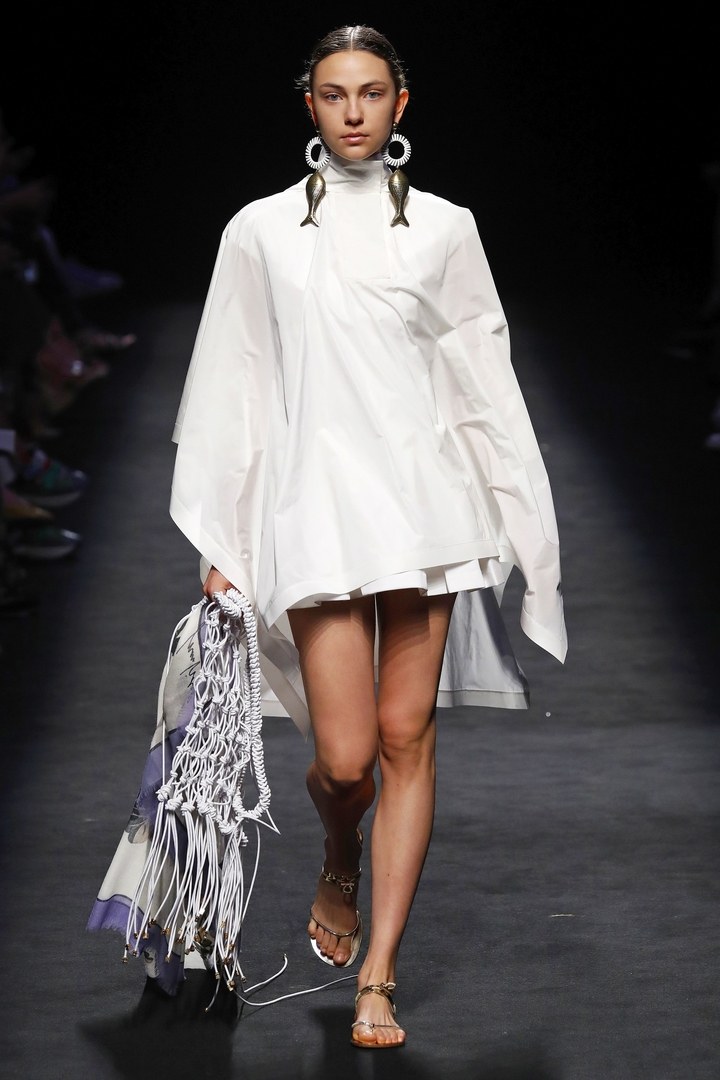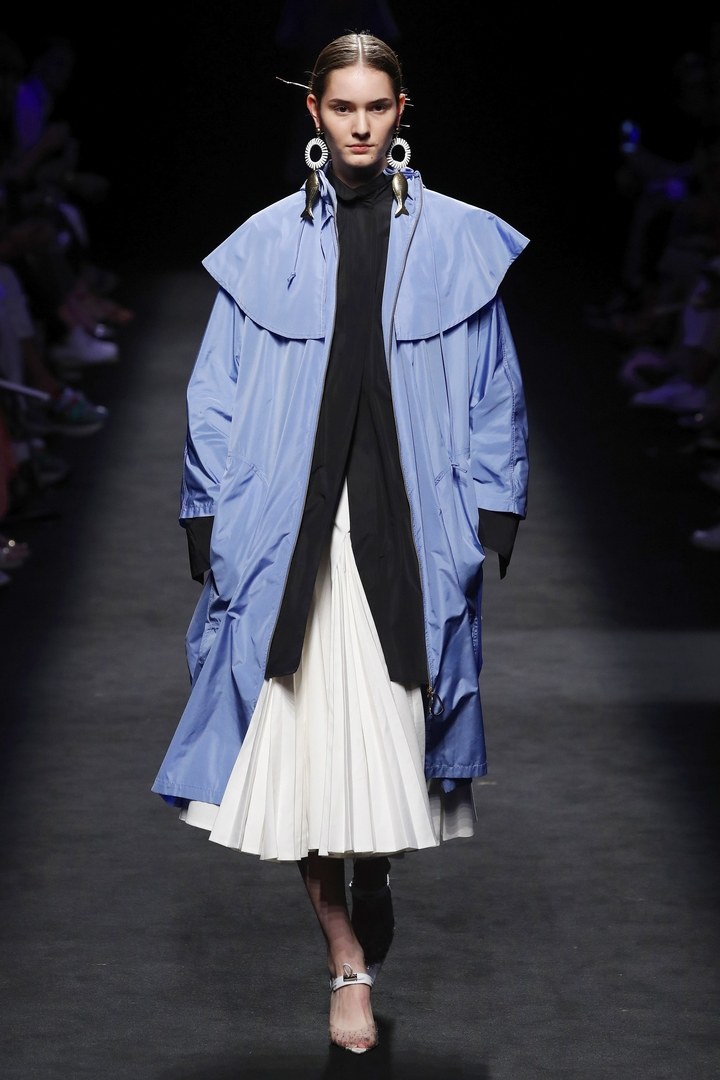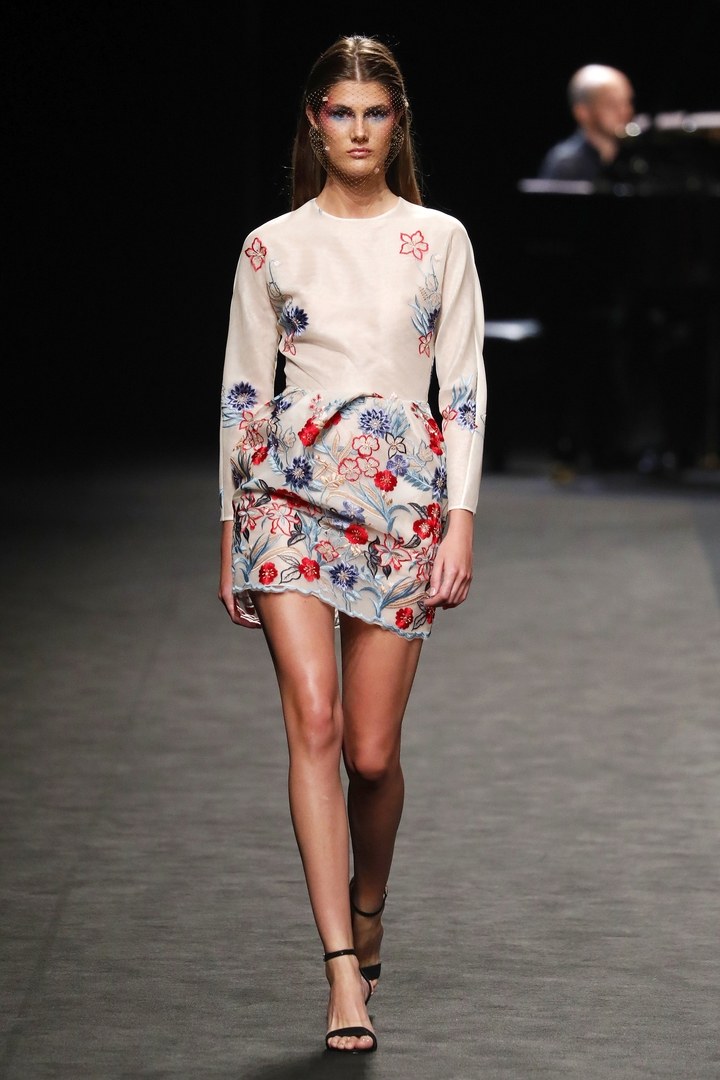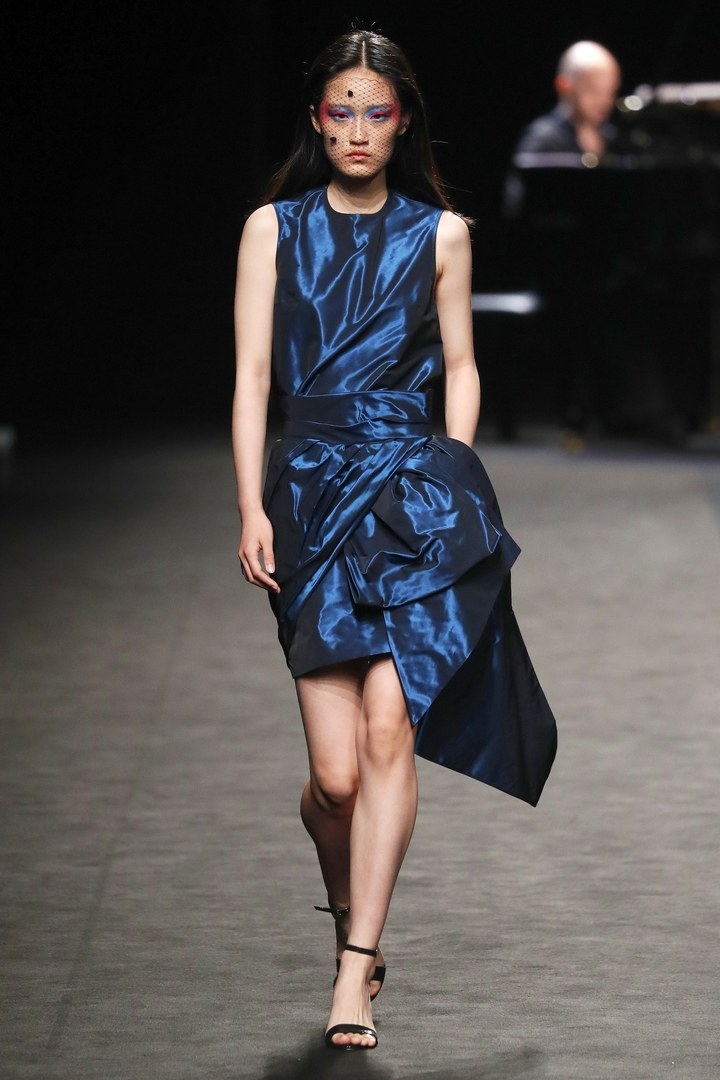
These are not good times for the survival of those areas that are the essence of authenticity and uniqueness and which add that singular character which is sorely lacking in most cities. The retail and multi-brand stores that bear the taste and style of their owner are gradually disappearing in those same homogenized cities with their identical shopping streets full of multi-brand chains and other shops with insipid character that appeal only to monotony and boredom. The culture of the clone seems still not to know its limits.
It is not a pessimistic vision, it is a reality that we also perceive in other fields, but maybe in the face of so much uniformity, whenever someone or something deviates from the norm, it attracts even more attention. And one of these magical areas is Dover Street Market.
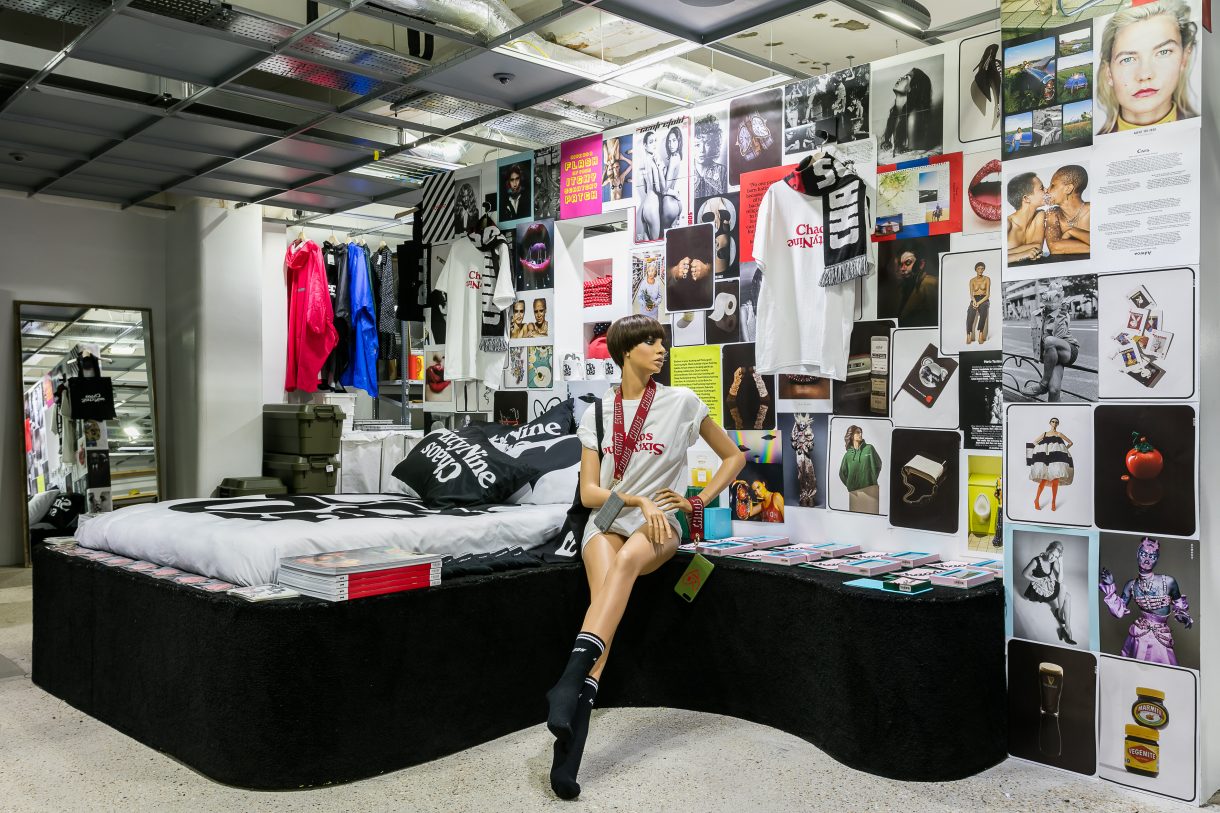 The retail sale revolution
The retail sale revolution
Dover Street Market has just turned 15 and its legacy is present in the main international fashion capitals. Its creators, the Japanese designer Rei Kawakubo , architect of Comme des Garçons, and her husband Adrian Joffe wanted to conceive their own experiment: an “anti-department” store, where everything flowed in the same concept, that would bring together in the same space both acclaimed or avant-garde designers and new talent. An inspirational fashion and beauty concept store dedicated to creating sensory experiences for customers with constant product renewal. The important thing is to generate surprise via novelty and the unexpected.
Dover Street Market first opened its doors in 2004 and in its day it revolutionized the retail landscape with its successful formula. The ideas of Kawakubo and Joffe were clear: they were not targeting a particular customer, nor did they want to separate the store into fixed departments. Quite the opposite: they wanted to create a unique concept where everything flowed, in accordance with the spirit of each brand, in order to capture the attention of the aesthete audience that loves both classic and avant-garde, young designers and luxury brands. A place capable of attracting and inspiring, “that stimulates the senses, elevates the spirit and makes one feel positive,” declared Joffe to Vogue.
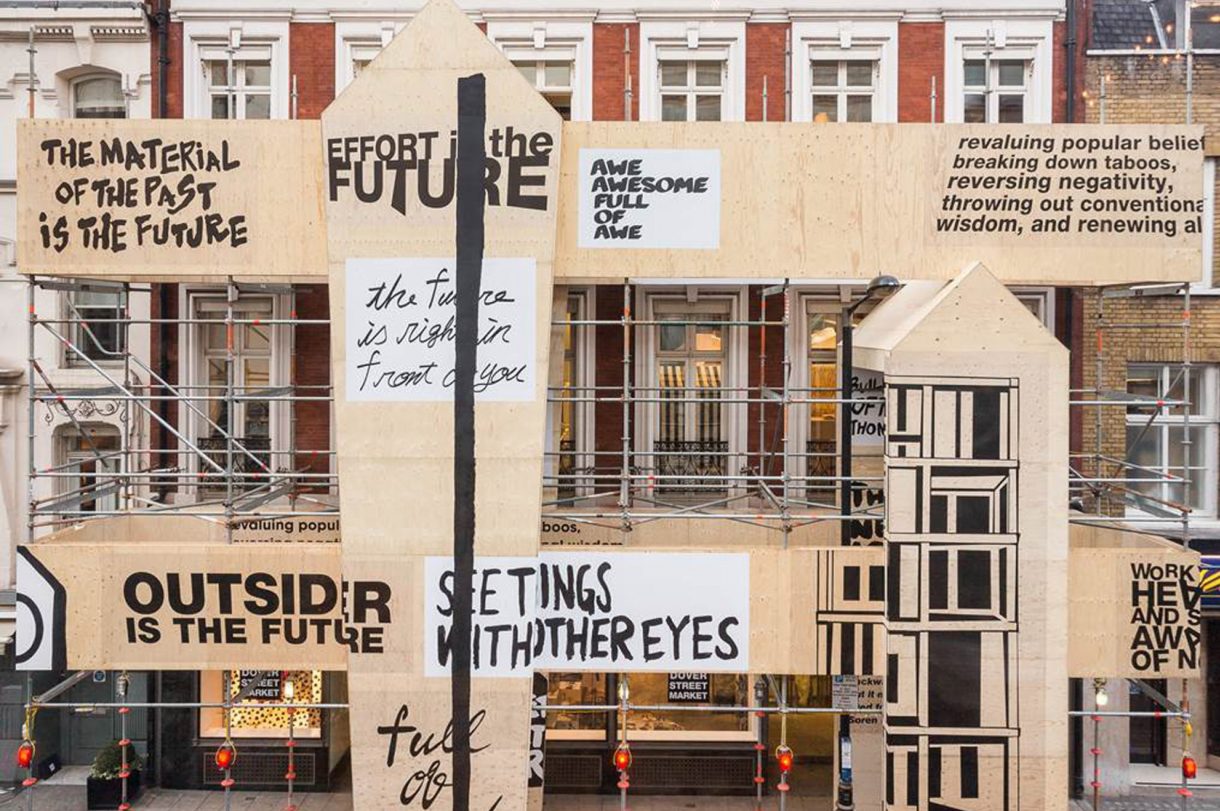
Rei Kawakubo called it the principle of “beautiful chaos” : the desire to break with the lifelong conventions of retail trade to favour the creation of a vast collaborative area in which the friends and family of Comme des Garçons could congregate, interact with each other and present their brands in new and dynamic ways.
This innovative trading concept, together with others that have marked a trend in the last decade, has spread throughout the world, from New York to Los Angeles, Beijing, Tokyo and Singapore. The most recent area opened in October in a shop dedicated to perfumes and cosmetics in Paris: the new invention is called Dover Street Perfume Market.
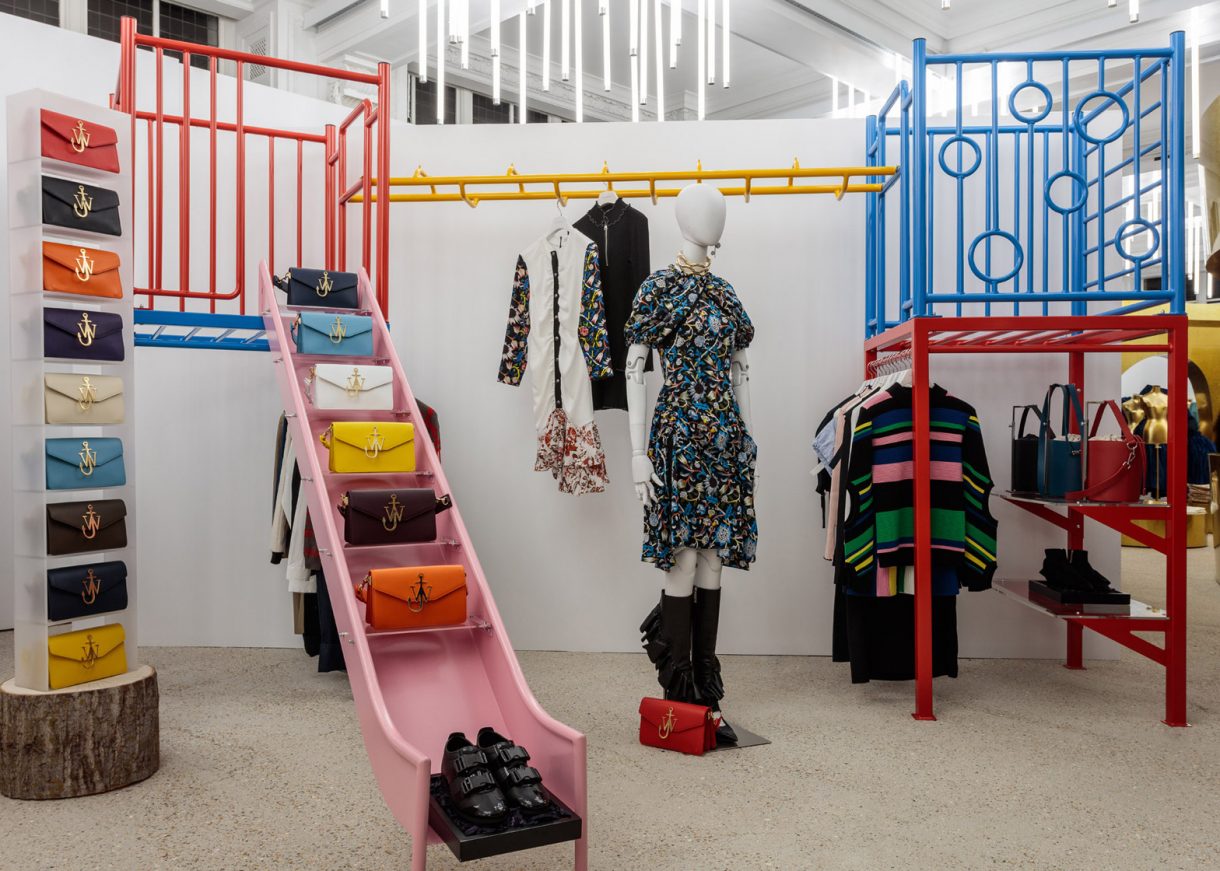
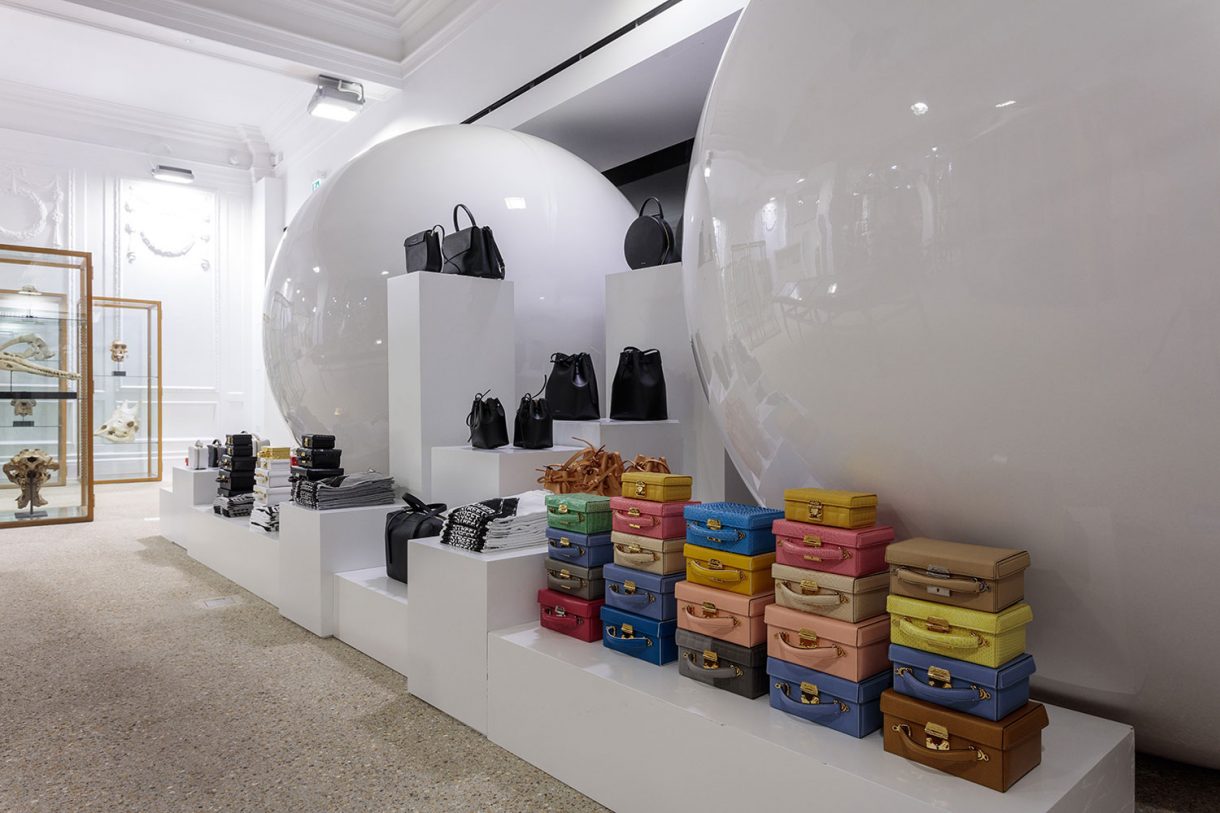

They call it the new black for its versatility and functionality, appealing elegance with discretion. Navy blue was never a risky tone, nor did it pretend to be because it is precisely through harmony, balance and timelessness that it seduces, which makes it a safe bet inside the wardrobe, one which goes beyond the cycles and fashions dictated by the sector. And it is already well-known that the classic never dies. For this reason the colour in question borders on immortality.
Here are some curiosities about enigmatic navy blue:
The origin of navy blue
Navy blue owes its name to the dark blue that was used in the uniforms of several navies. The first to adopt this shade was the British Royal Navy in 1748 and subsequently it was extended to most of the world's navies. In fact it offered the advantage that being almost black the loss of colour was avoided. Thus during the 18th century it was used as a base to dye uniforms.
During the 19th century the use of navy blue extended to other professions and quickly conquered the street. Then the colour black continued to maintain dominance in clothing which was considered serious. However, dyers used Prussian blue and indigo pigments to launch the fashion of navy blue fabrics and dresses, which became a social phenomenon. Navy blue maintained the sobriety of black, but it proved to be less hard and above all cheaper. In fact the colour of the clothing was generally not a matter of taste, but rather of money. After World War I this dark hue displaced black in many professions such as sailors, military, gendarmes, fire-brigade, police or civil servants.

Dior adopts it as a feminist symbol
“Among all colours navy blue is the only one that can compete with black, by presenting the same virtues.” This phrase by Christian Dior has also guided the last stage of the French maison led by Maria Grazia Chiuri, the first woman to lead the creative direction since 2017. Navy blue was Chiuri’s second collection for Dior, rebelliously picking up the heritage of the French designer with creations brimmed with items never seen on the catwalk such as jeans or a black leather beret as a star accessory.
Thus evening dresses, with transparencies and brightness, alternated with other looks for trouserss and workers’ overalls, as if they were factory uniforms combined with printed handbags. Navy blue represents equality and uniformity for Chiuri. There is no distinction of classes or genders. “The worker’s look is a way of saying that we have to work towards equal opportunities,” she argued at the time. Since then this colour has become a common resource in Dior collections that in lesser or greater proportion have adopted navy blue.

The most classic blue will also be the colour of 2020
2020 will also be dyed in blue. The justify Institute, a world reference in chromatic themes, has chosen the Classic Blue 19-4052 as the colour that will influence next year in such creative sectors as design, fashion or advertising. According to the institution it is a “lasting blue shade for our times, elegant in its simplicity”. It suggests the sky at sunset and its calming qualities, such as the promise of protection, ”said Laurie Pressman, vice president of the Pantone Colour Institute.
According to the institution Classic Blue tends to surge at convulsive moments of change and this tonality evokes the desire to consolidate reliable and stable foundations on which we can build. In this sense, it offers us a refuge: “We live in an era that demands trust and faith, and this type of blue offers a solid and reliable feeling that encourages us to broaden our thinking and challenges us to see things in depth,” explains Leatrice Eiseman, the executive director of Pantone.
The Pantone colour of the year is chosen by the directors of the company and about 40 experts from around the world, who take into account factors such as the economic situation, films and popular songs or social issues, among other variables. Thus Classic Blue is taking over from Living Coral, the colour of 2019.

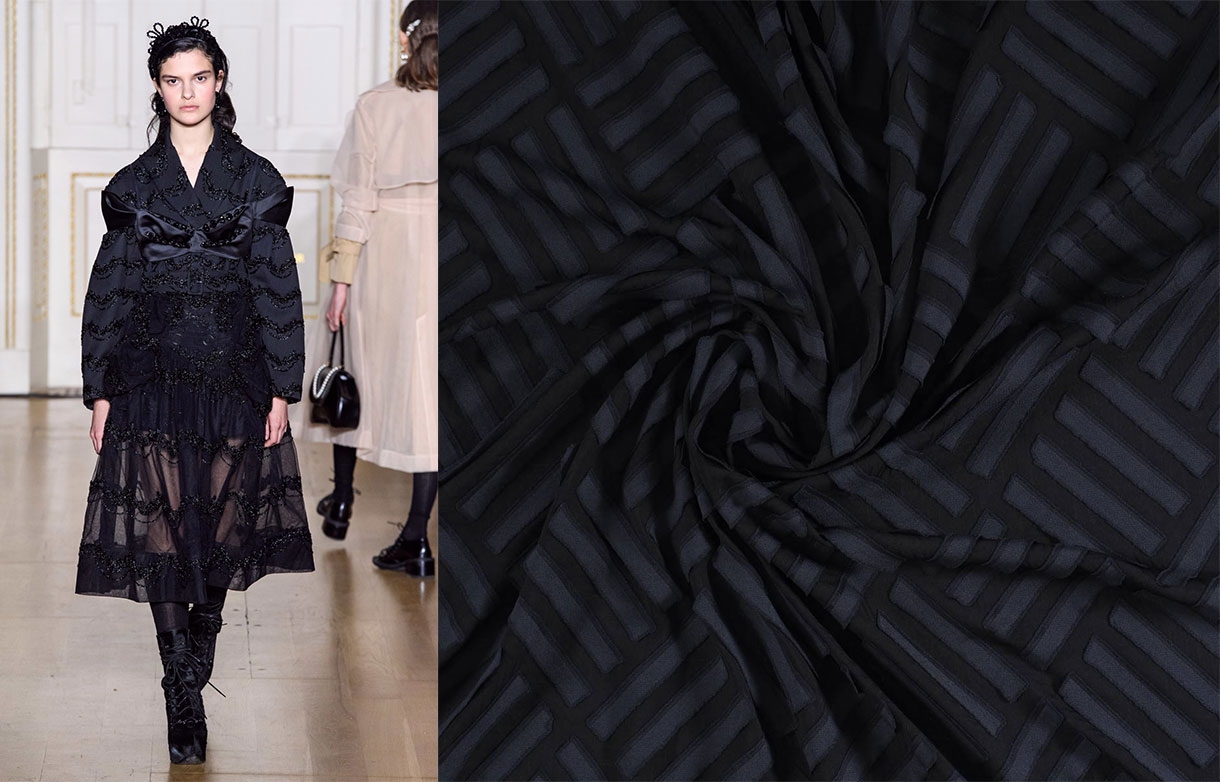

Miércoles 27 noviembre 2019
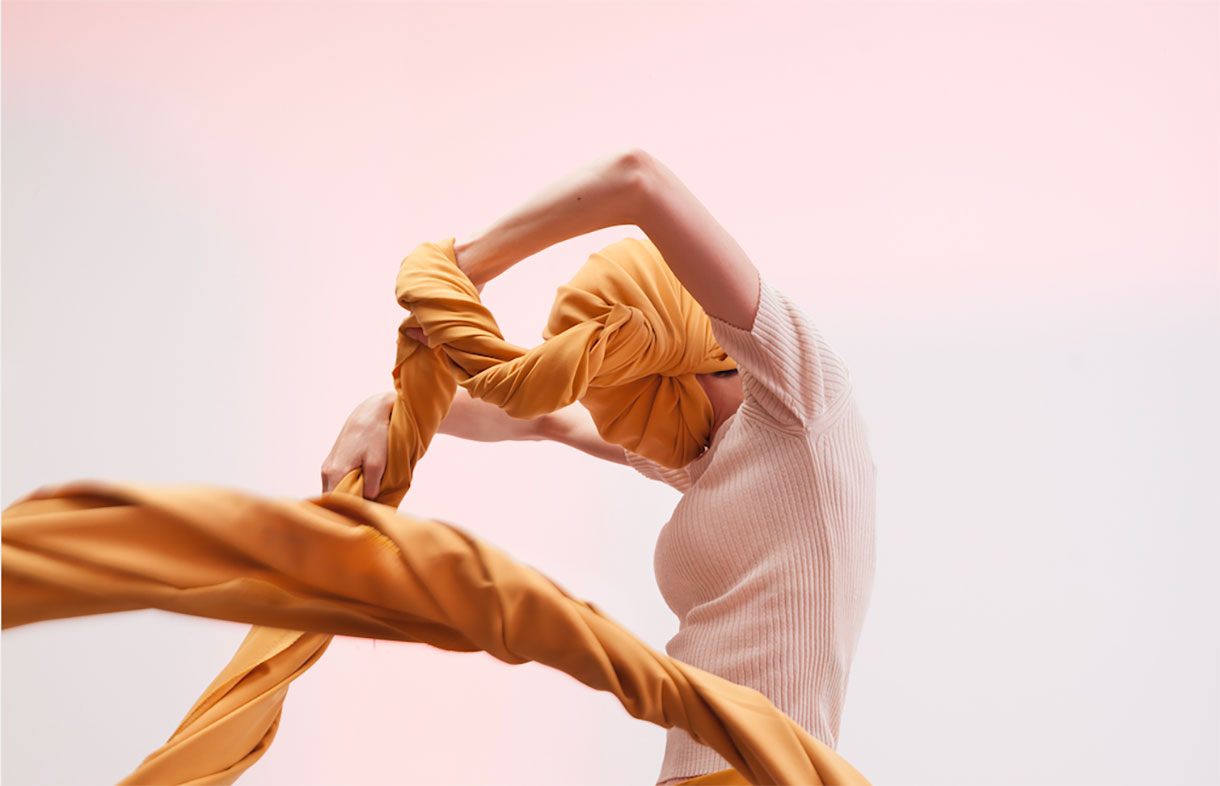
Barcelona is emerging, step by step, as a sustainable city in all its facets, including fashion. In this area the city will become this weekend (29th/30th November) the epicentre of the debate on sustainable and ethical fashion in southern Europe with the celebration of the first edition of the Re-Barcelona Sustainable Fashion Global Event: it is an international meeting point where sustainability in the fashion sector will be the protagonist and where the growing need to reimagine the fashion industry and rethink our consumption habits will be discussed. This unique event, co-organized by the Asociación Moda Sostenible Barcelona (MSBCN) and Seed & Click, and promoted by Barcelona City Council, has the vocation of becoming the voice and discussion forum of the best practices and initiatives in creation, production, sales and use of sustainable fashion among Mediterranean countries.
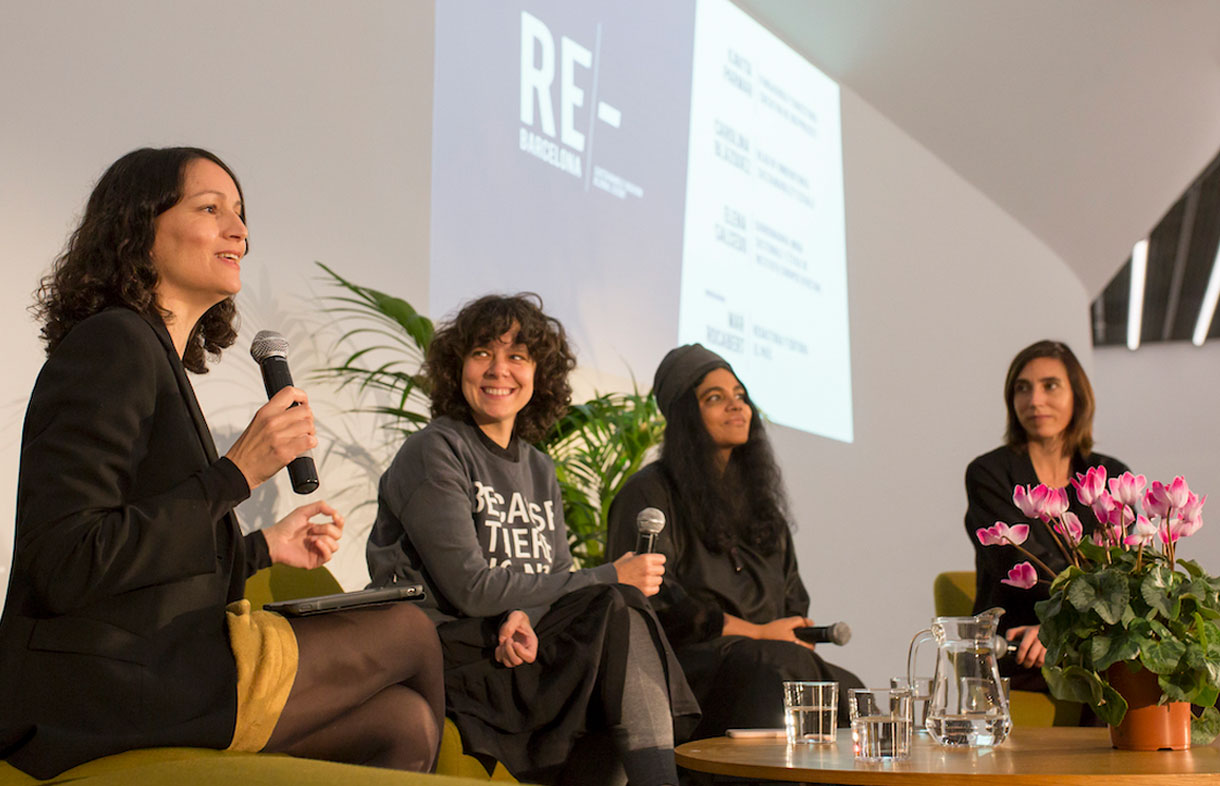
Presentations in sustainable key
Re-Barcelona will bring together more than 30 international professionals in sustainable fashion at the Disseny Hub Barcelona. The first day is aimed at professionals in the fashion industry and the second day will be open to the public, seeking to make consumers aware and point them towards more responsible consumption habits via fashion exhibitions, workshops, projections and masterclasses .
Thus on Friday 29th the Summit Sustainable Fashion and Beyond will take place, which for professionals will address the realities and challenges of the fashion sector in order to to bring about a more sustainable industry. During this day session prominent international names such as Rossana Orlandi , one of the most influential personalities in the world of design, will participate and among others Marie-Claire Daveu , director of sustainability at Kering, Sara K Arnold, founder of Higher Studio, Aldo Sollazzo, CEO of Noumena, Manel Subirats, general director of Greendyes Research Lab of Nextil, Mar Isla, Director of the Chair of Circular Economy, TecnoCampus, Kavita Parmar, founder of IOU Project and Marilyn Martinez, senior analyst at Make Fashion Circular at Ellen MacArthur Foundation.
In addition the meeting will feature four round table fora: the first, to discuss the capacity of fabric recycling and reflect on innovative and sustainable materials for the future; the second, to discuss new business models; the third, on the consumer mindset ; the last one, on sustainability in its entirety, incorporated into retail of the future. Prominent spokespeople from the sector will participate, such as, among others, Manuel Martos , Group Managing Director of Nextil, François-Ghislain Morillion , founder and CEO of Veja, Elena Foguet, Business Director Spain of Value Retail, Mariona Sanz , director of Girbau LAB in Girbau, Carolina Álvarez-Osorio , director of marketing and communication of Ecoalf, Carlos Lahoz , Global Brand Innovation Strategist for Textile Printing Business, of HP Inc ., Franco Ghiringhelli , general director, of Ezio Ghiringhelli Spa, Pau Solanilla , president, of Reputation Republik and Tamsin Lejeune , CEO of Common Objective. Iria Pérez, editor in chief of Modaes.es will be a moderator, as will David Allo, director of sustainability at Texfor. This summit for professionals is a paid event and tickets are on sale on the official website.
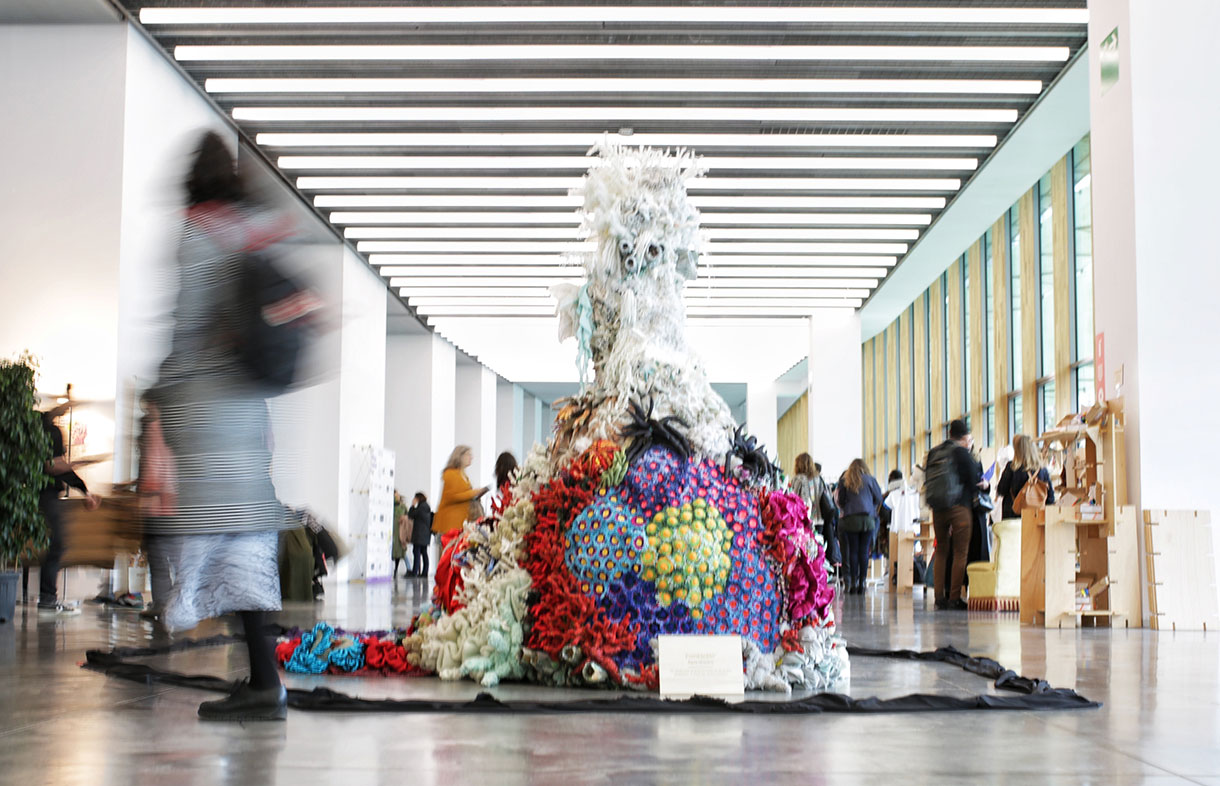
In addition the meeting will feature four round table fora: the first, to discuss the capacity of fabric recycling and reflect on innovative and sustainable materials for the future; the second, to discuss new business models; the third, on the consumer mindset ; the last one, on sustainability in its entirety, incorporated into retail of the future. Prominent spokespeople from the sector will participate, such as, among others, Manuel Martos , Group Managing Director of Nextil, François-Ghislain Morillion , founder and CEO of Veja, Elena Foguet, Business Director Spain of Value Retail, Mariona Sanz , director of Girbau LAB in Girbau, Carolina Álvarez-Osorio , director of marketing and communication of Ecoalf, Carlos Lahoz , Global Brand Innovation Strategist for Textile Printing Business, of HP Inc ., Franco Ghiringhelli , general director, of Ezio Ghiringhelli Spa, Pau Solanilla , president, of Reputation Republik and Tamsin Lejeune , CEO of Common Objective. Iria Pérez, editor in chief of Modaes.es will be a moderator, as will David Allo, director of sustainability at Texfor. This summit for professionals is a paid event and tickets are on sale on the official website.
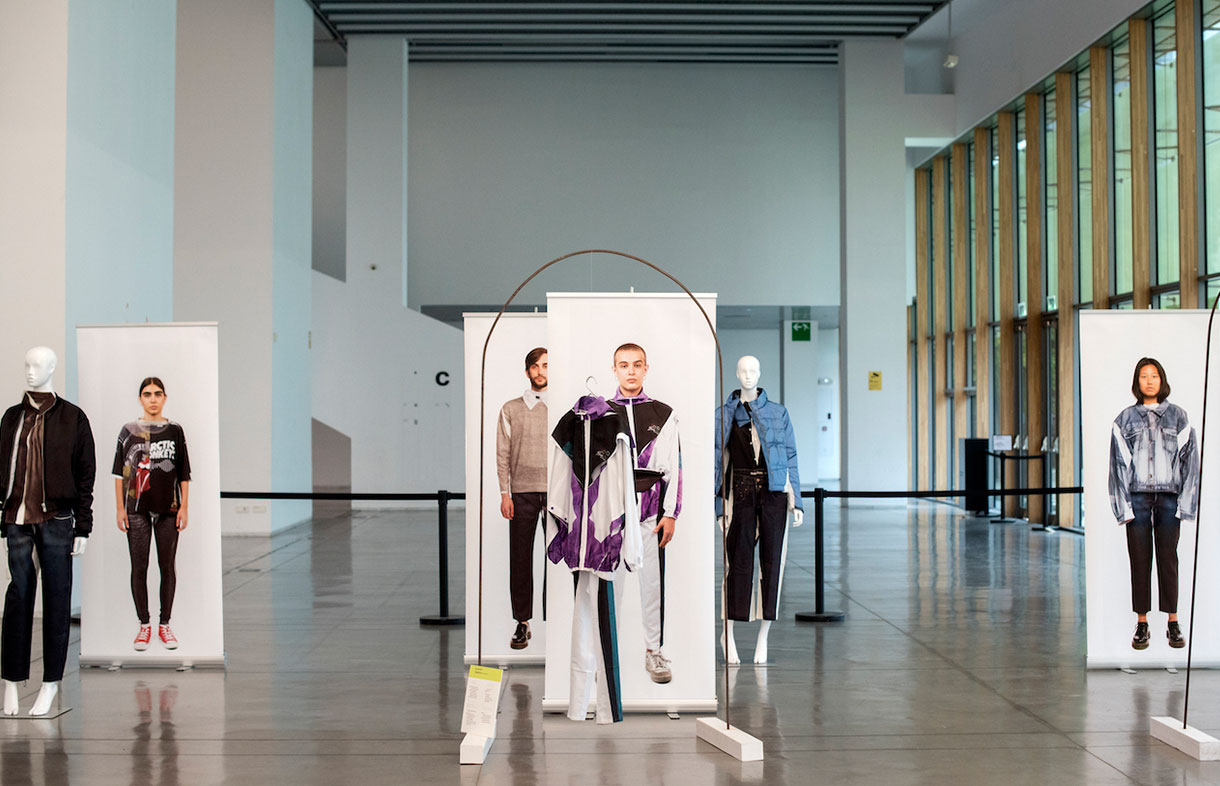
An area open to the public
Additionally Re-Barcelona will feature an area open to the public that during the two days of the event will be the scene of presentations, round tables, activities, workshops and screenings of fashion films . The Open Space, entitled ‘ Conscious Space Beyond’, will include an exhibition area with stands of entrepreneurs, companies and entities related to sustainable fashion.
Among the exhibitors are the entities resident in Disseny Hub Barcelona: BCD Barcelona Design Centre, which will promote “Hula Hoop: the experience in circular design” to raise environmental awareness via workshops; and MODA-FAD, which will celebrate the “MODA-FAD Sustainable Challenge”, a design marathon where 30 students will create new pieces from textile waste.
Attendees can also enjoy the show ‘Victor Papanek: the design policy of the Museu del Disseny’, the first major retrospective focused on one of the precursors of social activism and sustainability in design. ‘Reimagine Textile’ will also be exhibited, an entrepreneur programme in which TecnoCampus participates and will present start-ups with innovative projects also Reshape, which will show the winners of its annual competition on smart products and wearable technology, thanks to the support of the Italian Consulate General in Barcelona.
Finally, in the Open Space, Girbau will offer a masterclass on “wet cleaning” or water washing system, the green alternative to perchlorethylene for dry cleaners. In this same area there will be presentations of several projects, and as part of the Re-Talks, round table discussions will be held. Finally, fashion films will also be screened , in collaboration with the British Council and the Italian Consulate General in Barcelona.
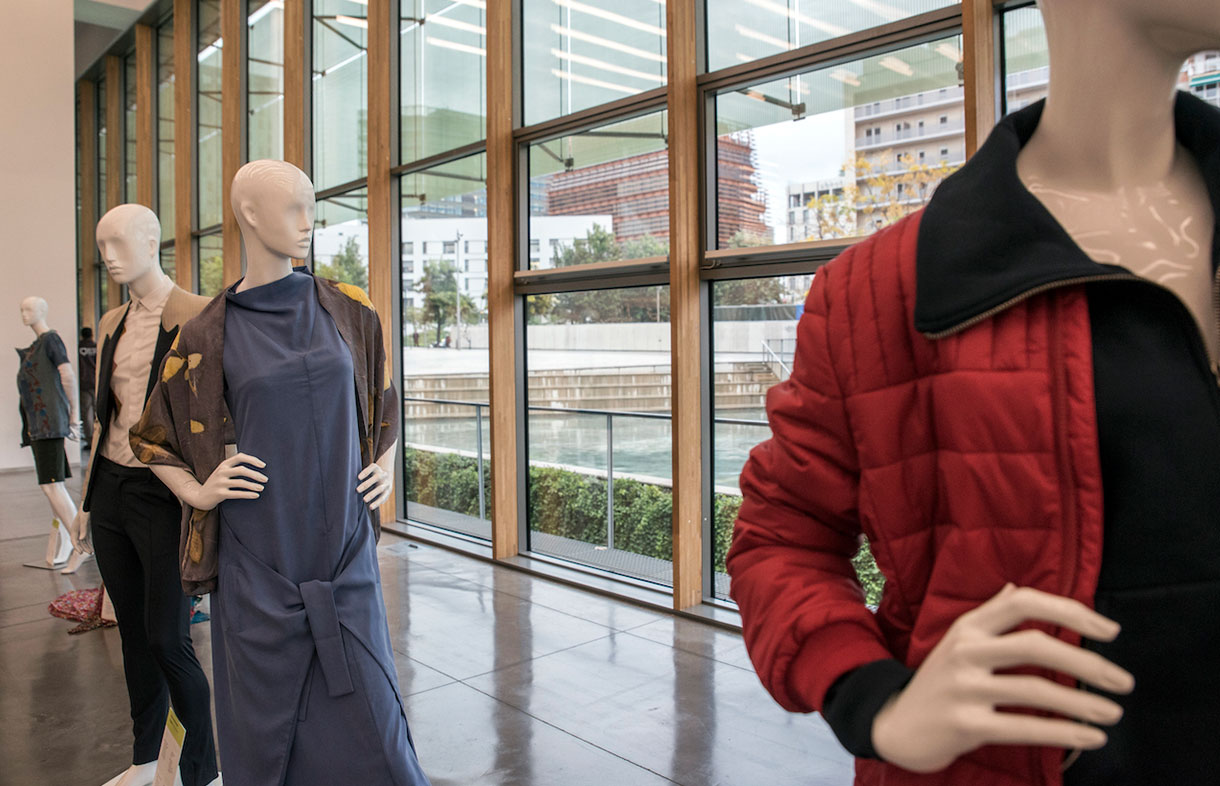
Miércoles 20 noviembre 2019
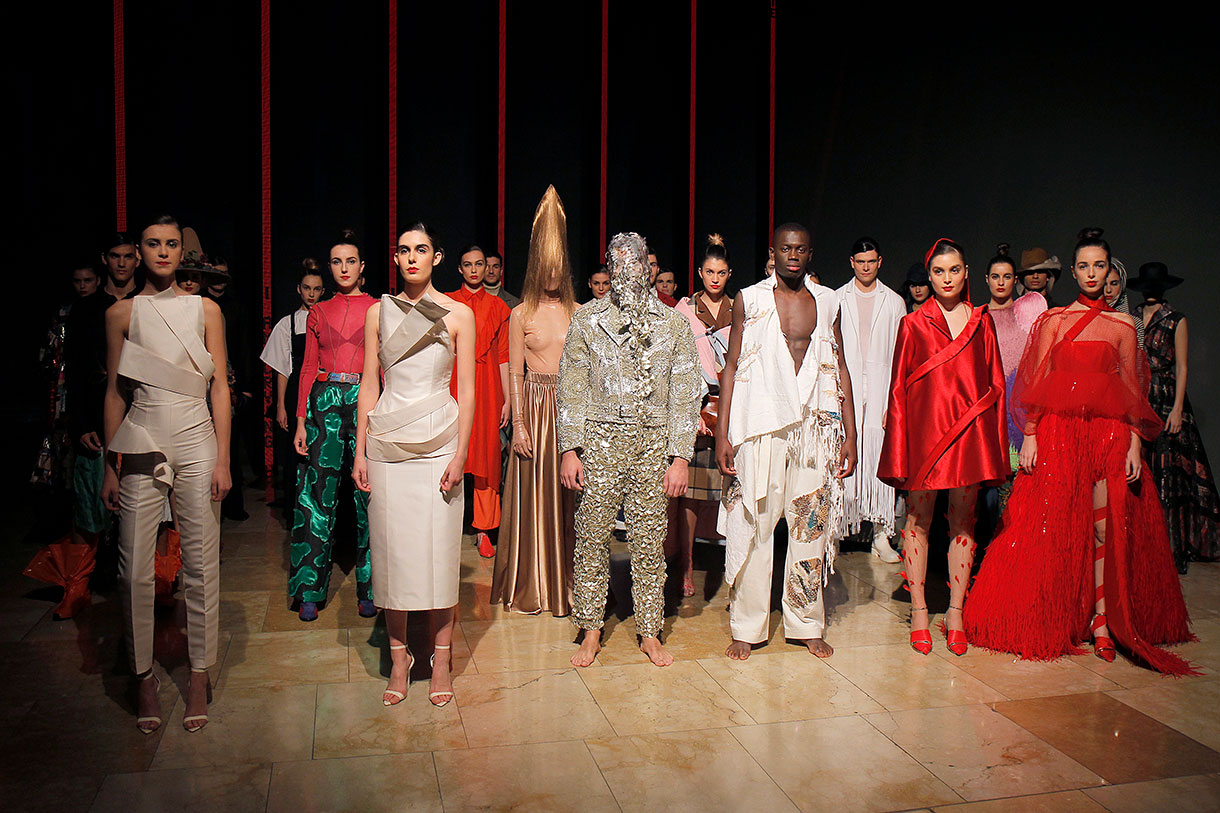
A tribute to design, creativity and emerging talent. That is exactly what was celebrated this week at the Guggenheim Museum Bilbao with the 25th anniversary of IED (Higher School of Design) in Spain. Among other activities the renowned fashion and design school wanted to record the event with an impressive fashion show in which national and international designers who have trained in the classrooms of IED Madrid and IED Barcelona participated, since the institution was founded in Madrid in 1994. Gratacós also participated in this exhibition of young designers collaborating through fabrics that took the form of lush garments on the catwalk. It is indeed part of our commitment as a company to support schools that help instruct future designers.

A parade of promising young designers of Spanish fashion
Under the name “25 designing the future”, the IED school grouped in the same parade 25 different collections signed by ex-alumni of IED Madrid and IED Barcelona who were responsible for capturing the past, present and future of the school. This event was part of the TopArte programme of the Guggenheim Museum Bilbao, on the occasion of the celebration of Bilbao Bizkaia Design Week. Recognized names that regularly participate on the main Spanish cat-walks such as Moisés Nieto, Carlota Barrera or Cristina Tamborero paraded together with other emerging brands in an eclectic exhibition of garments and visions that highlight the individuality of designers from different parts of Spain and also from countries such as Italy, Brazil, Romania, Israel, Mexico or the United Kingdom, among others. “Fashion is the most powerful means of expressing the identity of human beings. It is the connector and collector of dreams, urges, worries and personal inspirations …, therefore, we want to show a mosaic representative of IED talent of the last 25 years” declared Alessandro Manetti, CEO of the IED in Spain in justification of this powerful parade.

“The IED has left as inheritance an important generation of designers that promote the culture
and sensitivity of design worldwide” – Alessandro Manetti
The chosen looks of each participating designer were intended to define the future of fashion and reflect the challenges that the sector currently presents with creations designed for a sustainable look, conceptual and avant-garde designs, delicate handmade items produced locally or party dresses for large celebrations which follow haute couture techniques. “The IED has left as inheritance an important generation of designers that promote the culture and the sensitivity of the design worldwide”, added Manetti. In addition, for the occasion a former student of IED Madrid, one from IED Barcelona and another from IED Milan each created two looks for the event in honour of the 60th anniversary of the construction of the Guggenheim Museum in New York, designed by the architect Frank Lloyd Wright . The curved spiral shapes, the delicacy of the pieces of art exhibited in it and the opulence of the building’s architecture have inspired the designs, some of which have been manufactured with our fabrics that we offered for this celebratory event.

An event full of familiar faces
This parade commemorating the 25 years of IED also counted on the support and assistance of important celebrities linked to the fashion world such as actress Rosy de Palma, the American international critic Diane Pernet, the Belgian fashion expert Francine Pairon or the designer Custo Dalmau, who accompanied Pilar Pasamontes, IED scientific director of Fashion and Julia Weems and Mosiés Nieto, directors of the fashion area of IED Barcelona and Madrid respectively. Among the casting of models was Palito Dominguín, sister of Bimba Bosé and daughter of Lucía Dominguín, and the model Bet Callieri, all of whom participated in the closing parade.
It was a pleasure to collaborate in this unique event of celebration of the IED and at Gratacós we are eager to see everything planned for the future. Here’s to 25 more years!
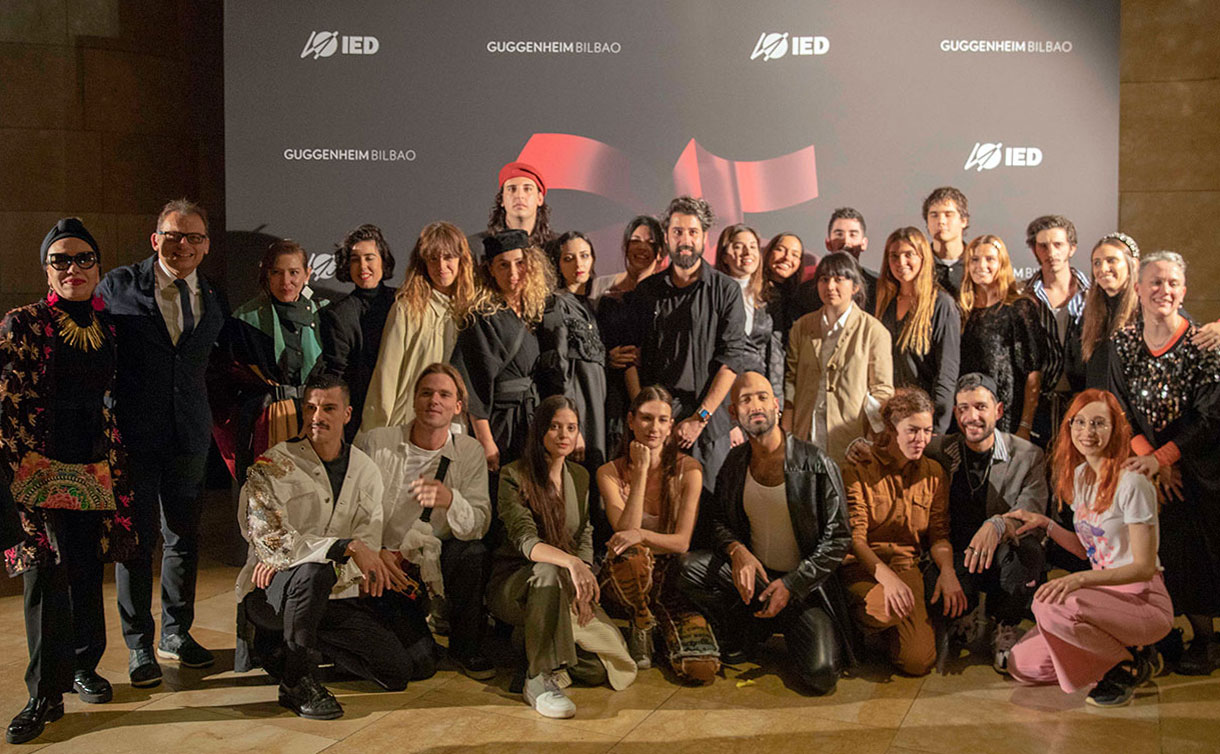

Something is cooking in Georgia that is catching the spotlight of the fashion industry. In the last decade this Caucasian country has been in full creative ferment, influencing various disciplines such as art, design and of course also fashion. Its capital, Tbilisi, is an authentic breeding ground for emerging designers who through their creativity are setting a hallmark for the industry, eager for novelties and ready to always hunt new talents. Among the most relevant creative designers at international level, for example, is Demna Gvasalia, who has revolutionized the landscape with her ironic and impractical designs for Vetements and her success has led her to become the creative director of Balenciaga. Another outstanding influencer is David Koma,who heads the company Thierry Mugler and his own eponymous brand based in London. Gvasalia and Koma represent the two most visible leaders of a new group of designers who are making waves in the Caucasian region.

Obviously Tbilisi still cannot compete with Paris, London, Milan or New York, but little by little, the Tbilisi Mercedes-Benz Fashion Week is gaining prestige and relevance within the international scene. Among all the independent designers who have presented the latest collections on the cat-walk we are following closely the designs of Anouki Areshidze with her own brand Anouki , the creations of Gvantsa Janashia, who usually relies on our fabrics to elaborate the looks of the latest collections, the Dalood firm led by its founder Maka Kvitsiani, the Gegesha brand , the luxurious creations of Ani Datukishvili and the minimal style of Keti Chkhikvadze. These designers with almost unpronounceable names habitually rely on our fabrics to develop their wild creations.

This cat-walk also generates fascination among the fashionistas who attend the parades dressed in a fresh and modern street style style and who fill dozens of photo galleries. Fashion magazines are in fact increasingly becoming aware of this effervescence that is appreciated and spread among the people at street level who dictate trends. That is why it is increasingly common to see international media photographers capturing every detail of the outfits of Georgian it-girls and it-boys.

Dominnico shines at the Mercedes-Benz Fashion Week Tbilisi
One person we cannot ignore is Dominnico and his staging on the Georgian catwalk in early November, which has been the first international experience of the Alicante designer in the world of fashion. It should be remembered that Domingo Rodríguez won the Mercedes-Benz Fashion Talent award during last July’s edition of the Madrid catwalk. This award brings together young talents and promises them a tempting reward: the cat-walk at the Tblisi Mercedes-Benz Fashion Week.

Thus Dominnico has had another opportunity to present his winning collection ‘Harajuku Kids’, exhibited during the month of September in our creative area in Barcelona. The SS20 collection is inspired by the movement that is trending on the Internet and the colours chosen by artists such as Andy Dixon or Antoni Tudisco with mannequins that resemble Bratz dolls. Their characteristic designs go for tornasolado plastic, brilli-brilli fabrics, magnificent creations in fur and billowing dresses which also captivated the Georgian public.
We will be following closely the work of Domingo Rodríguez and from Gratacós we thank you for your support and trust. Thanks Dominnico!
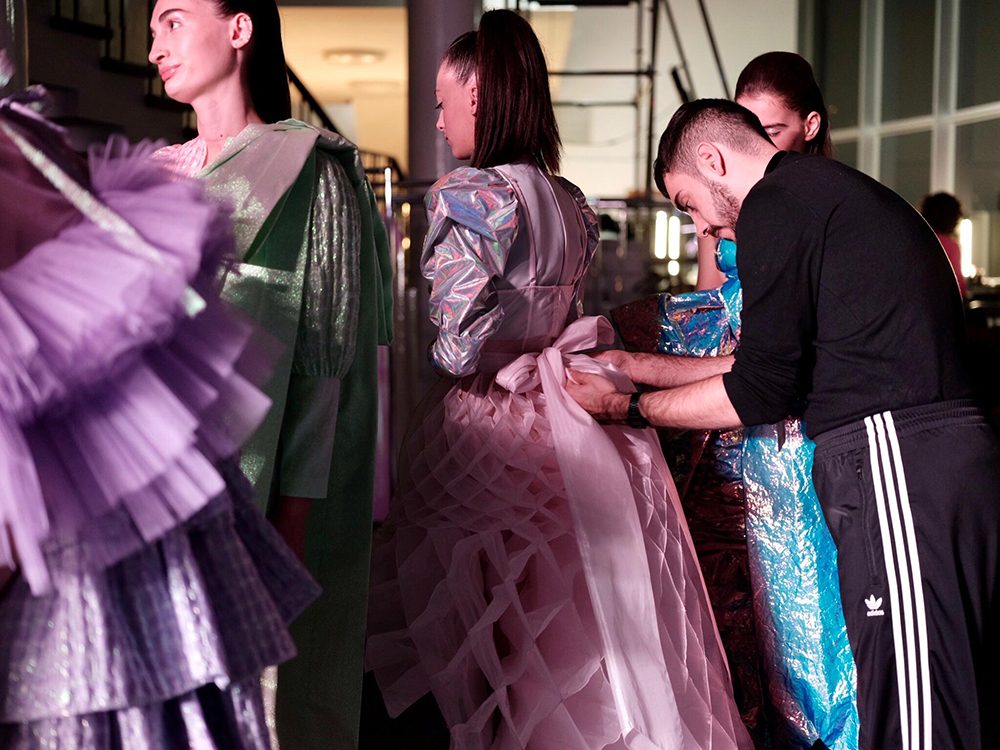
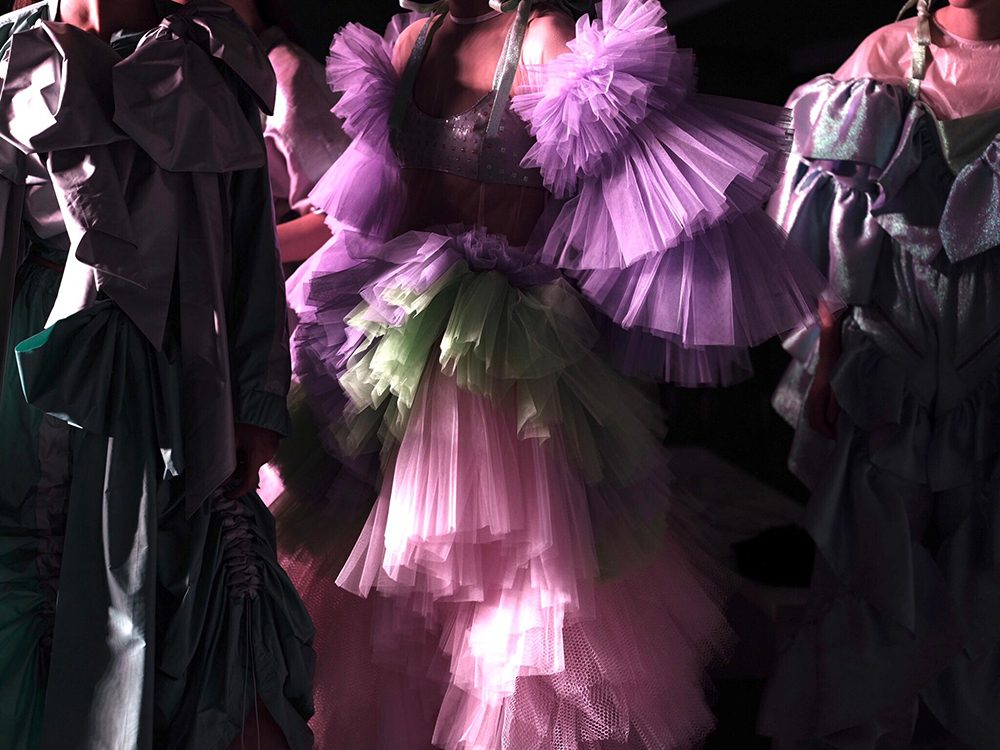
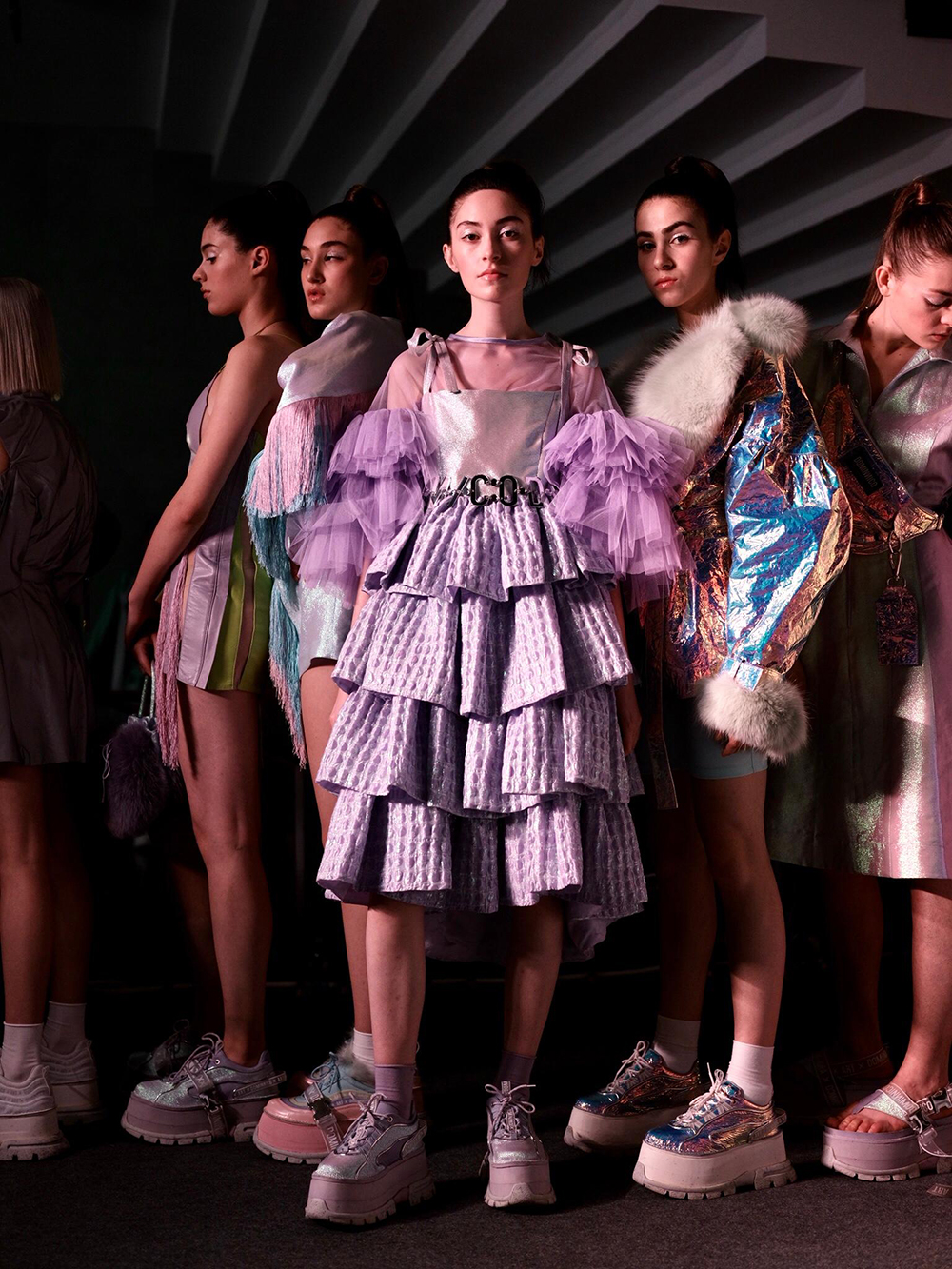
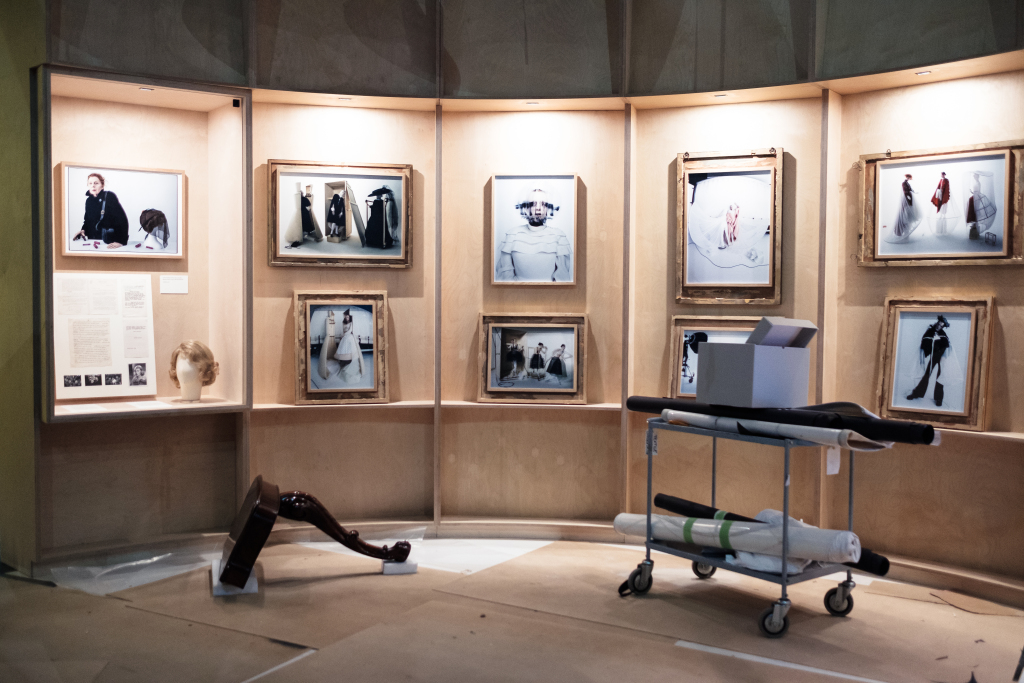
Fashion shows are appealing at any time of the year. They represent an opportunity to reflect on the sector from multiple points of view and covering topics as different as those we suggest below: the dialogue established by garments and their fabrics in migratory societies, the importance of sustainability, the history of footwear or a vision of fashion photography via one of the great contemporary artists.
On the eve of a new holiday, All Saints Day, we are offering you a new cultural route throughsome European exhibitions that we have not yet mentioned in this blog: interesting fashion shows in cultural capitals such as Antwerp, Florence, London and Paris, so that like us you can also find inspiration, knowledge and new ideas that enrich you in your respective jobs. Take note!
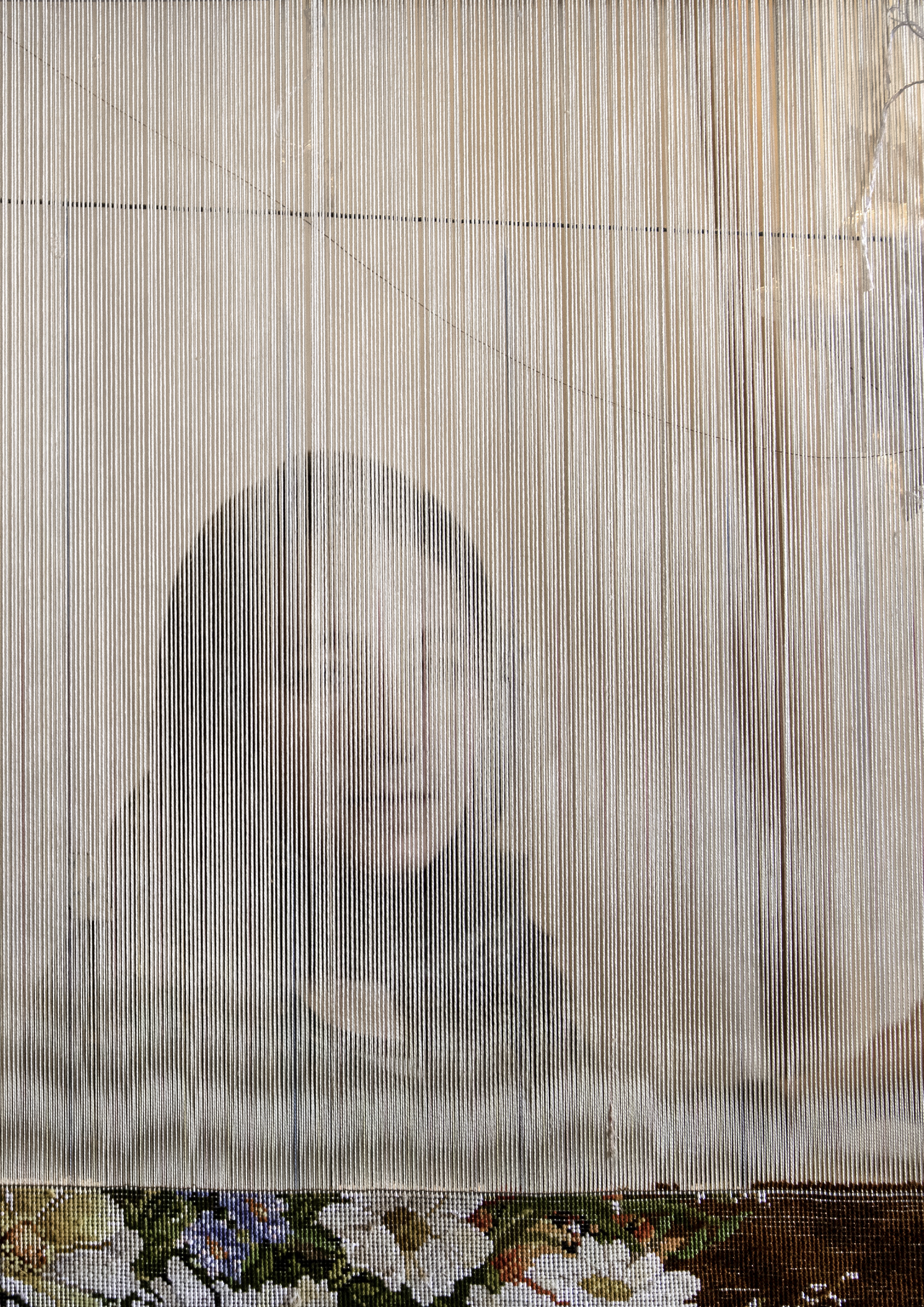
1. Antwerp: ‘Textile as Resistance’
The exhibition ‘Textile as Resistance’ at the MoMu (Antwerp Fashion Museum) asks interesting questions of the public: What messages and stories can the fabrics convey? What does an item of clothing say about the person wearing it? Can fabrics weave the past with the present? Can they be acts of resistance? The journalist Samira Bendadi and the photographer Mashi Mohadjerin reflect on the values that fabrics can provide (shelter, resistance, hope, happiness, tradition, beauty, spirituality and decolonisation) and try to answer all these questions through this challenging sample. It is a joint photographic project that began through stories from immigrants in the Belgian fashion capital and that soon spread to other parts of the world. Thus in ‘Textile as Resistance’ this creative couple invites you to discover clothes and textiles as an excuse to learn visual and written stories that transcend religious, cultural and national boundaries. Migration marks social, aesthetic and personal change.
Momu ‘Textile as Resistance’.Until February 16, 2020.
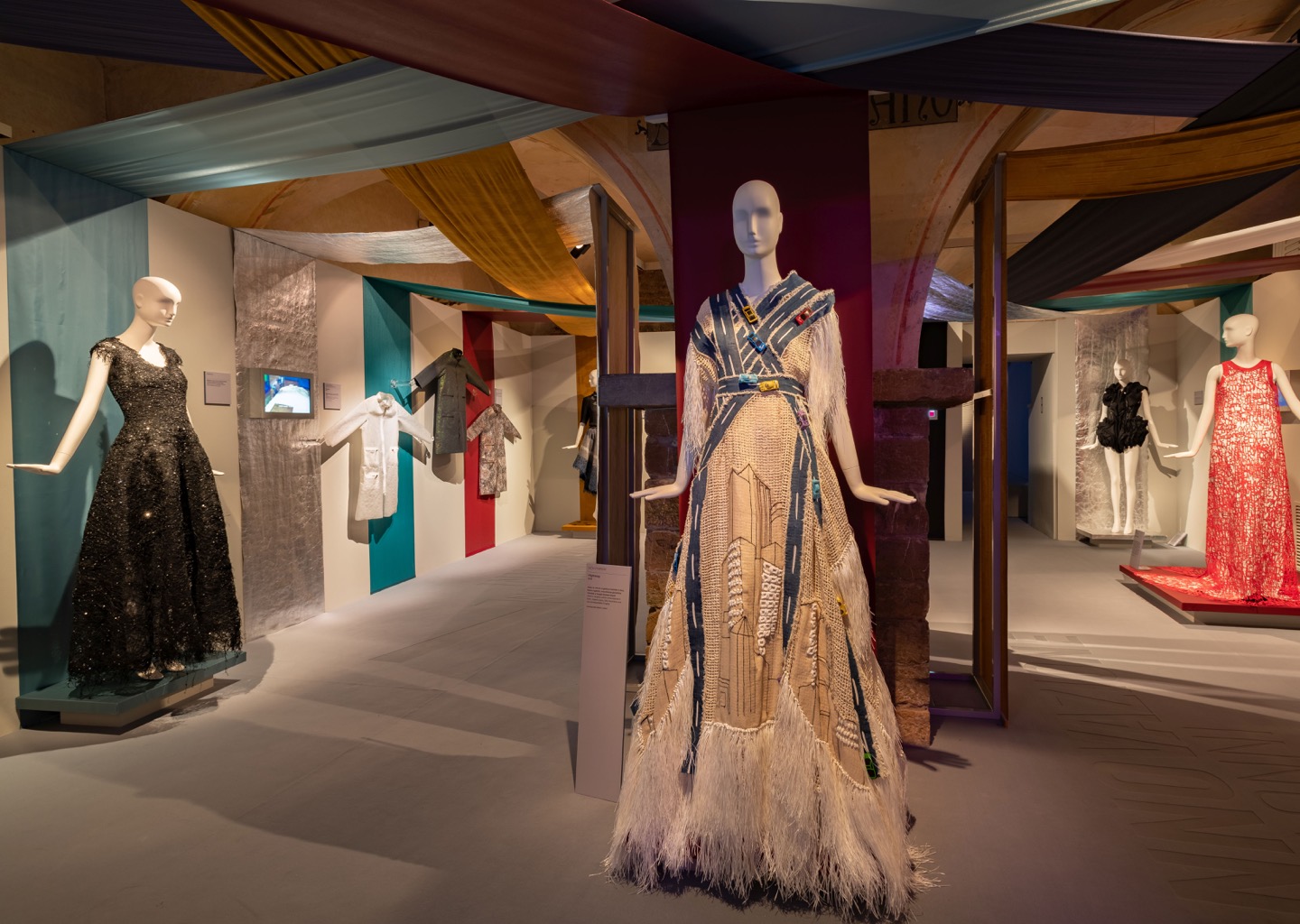
2.Florence: ‘Sustainable Thinking’
Sustainability is neither a fashion nor a trend: it is a real necessity. Aware of the move towards green issues that we are also promoting from Gratacós, we are especially interested in recommending this exhibition that houses the Salvatore Ferragamo Museum in Florence. ‘Sustainable Thinking’ invites reflection through art and fashion.
The term “sustainability” defines the human capacity to meet “the needs of the current generation without compromising the ability of future generations to meet their own needs.” It is a challenge that is not limited to production methods but also implies a greater focus on the environment in general. Balance must be restored, beginning with a more conscious and shared way of thinking that is capable of generating new development and coexistence strategies. For this reason, ‘Sustainable Thinking’ exposes the work of numerous artists who reflect on sustainability. Some projects focus on recovering the link with nature, the use of organic materials, the need for a creative reuse of materials, the connection between sustainability and technology … An opportunity for artists, fashion designers, textile and yarn manufacturers to offer a plurality of views to inspire new sustainable projects.
Salvatore Ferragamo Museum. ‘Sustainable Thinking’. Until March 8, 2020.
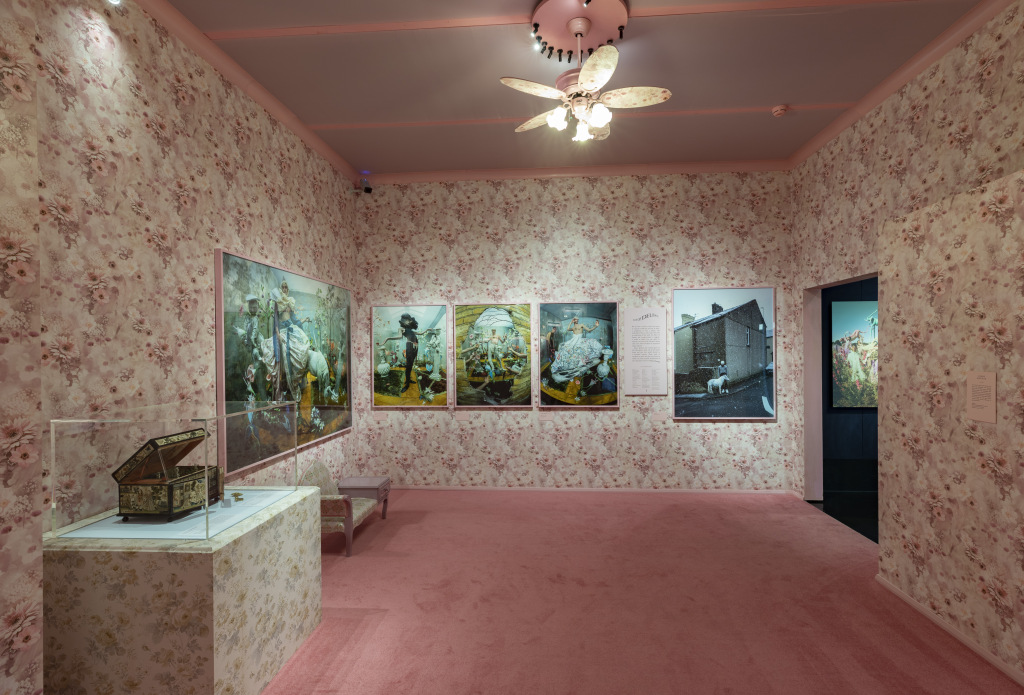
3. London. Tim walker
Coinciding with the exhibition dedicated to the talented designer Mary Quant, “the mother” of the iconic miniskirt, the Victoria & Albert Museum opens a new exhibition in parallel, this time dedicated to photography. As the name implies, ‘Tim Walker: Wonderful Things’ represents an immersive journey into the fantastic worlds created by this contemporary fashion photographer who is one of today’s most interesting profiles. Specifically the exhibition shows Tim Walker’s creative process via his pictures, films, photographic sets and special installations. The exhibition also includes an exclusive photo session made with some of the museum’s iconic garments
GOES. ‘Tim Walker: Wonderful Things’. Until March 8, 2020.
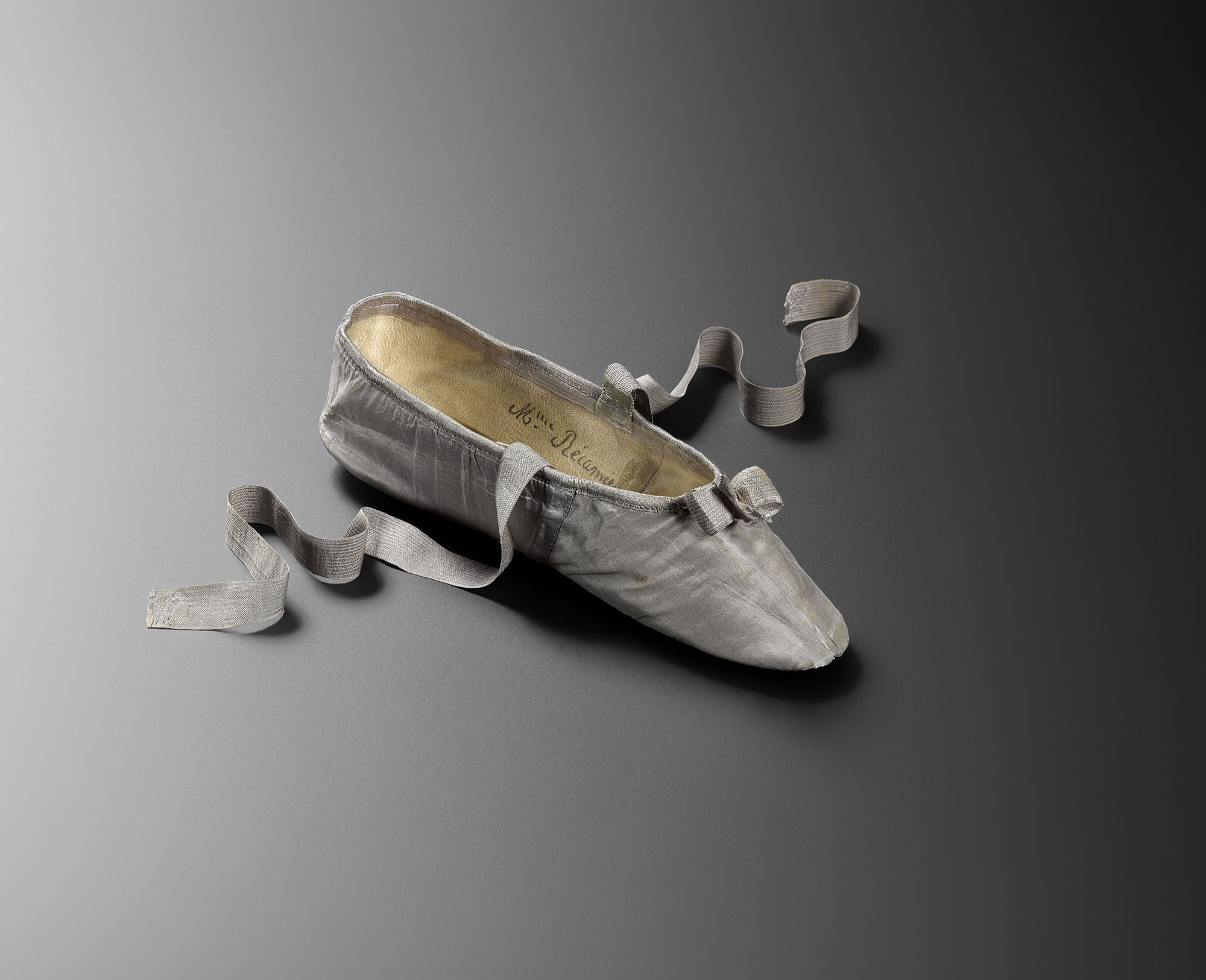
4. Paris. “Marché et Démarche: Historie de la Chaussure”
The Museum of Decorative Arts in Paris reschedules a new fashion exhibition to capture the attention of visitors. On this occasion the focus of attention is footwear and its history. From the complement itself to a reflection on the act of walking. The sample is based on a 1792 shoe attributed to Marie Antoinette which was only 21 centimeters long and then, little by little, it delves into into the history that lies behind each accessory displayed. The sample of 500 works includes shoes, paintings, photographs, works of art and films in order to reveal more about this garment which covers our feet.
Museum of Decorative Arts. “Marché et Démarche: Historie de la Chaussure”. Until February 23RD, 2020.
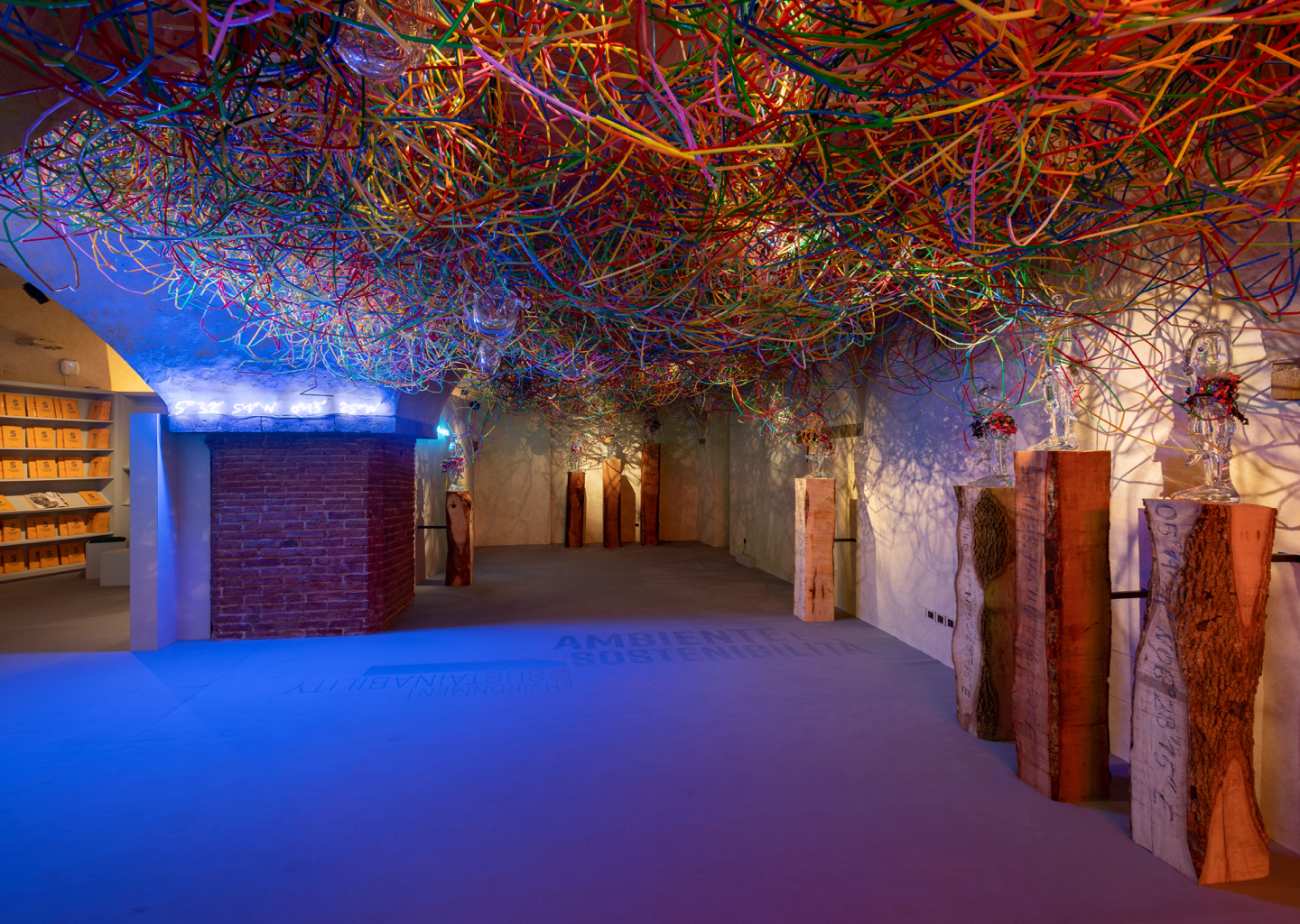
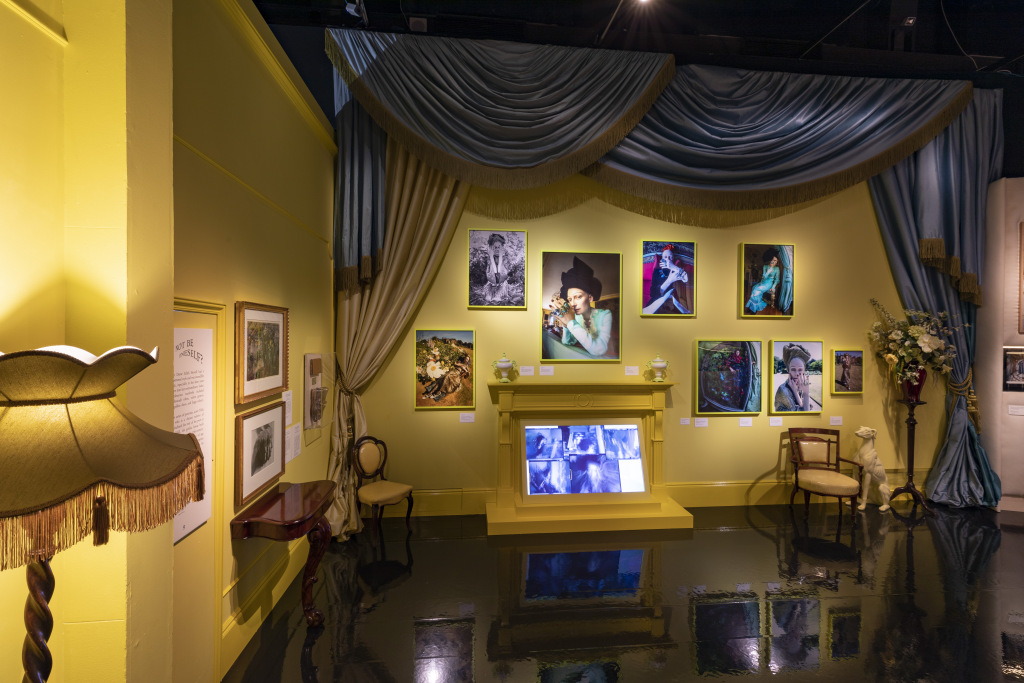
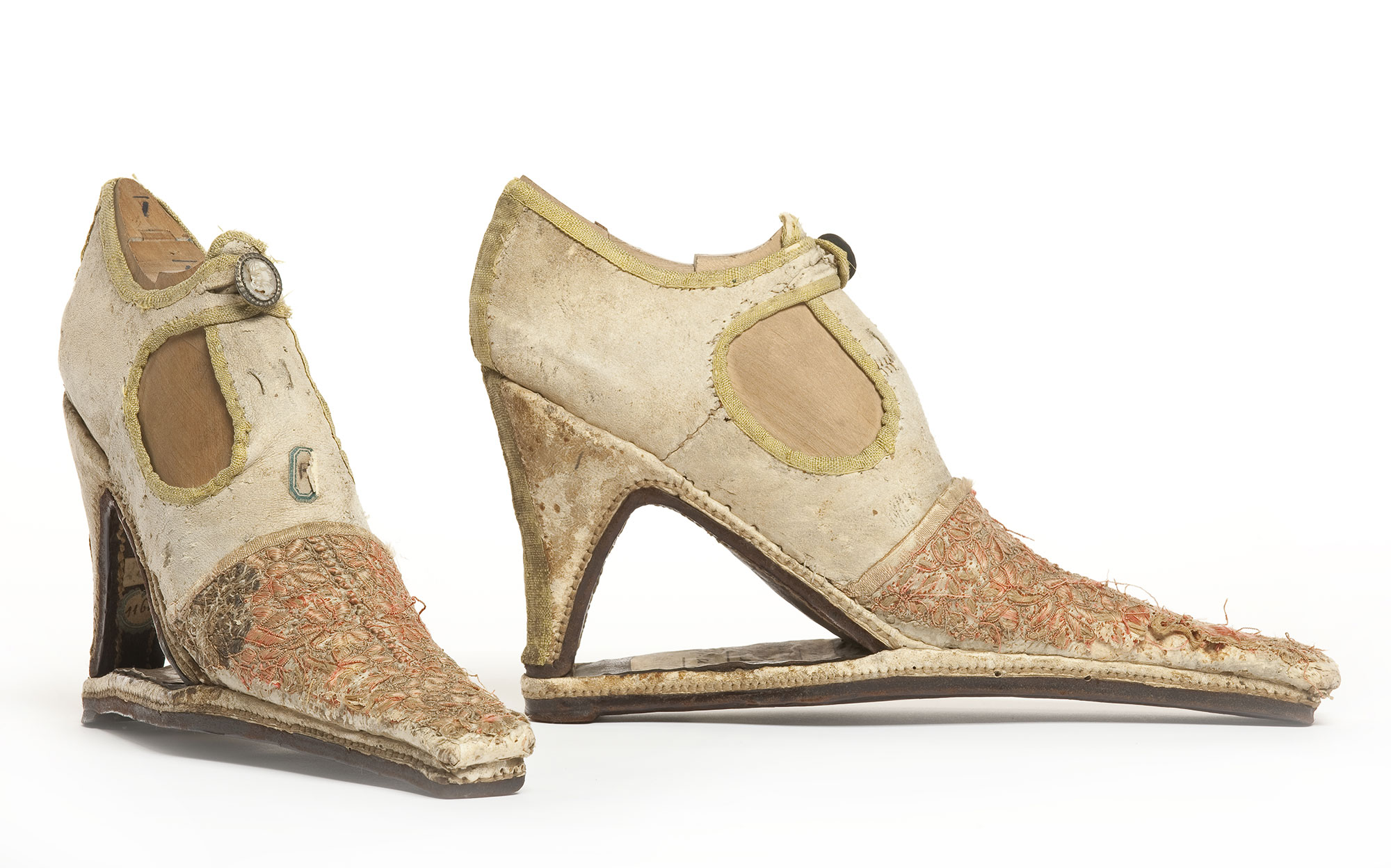
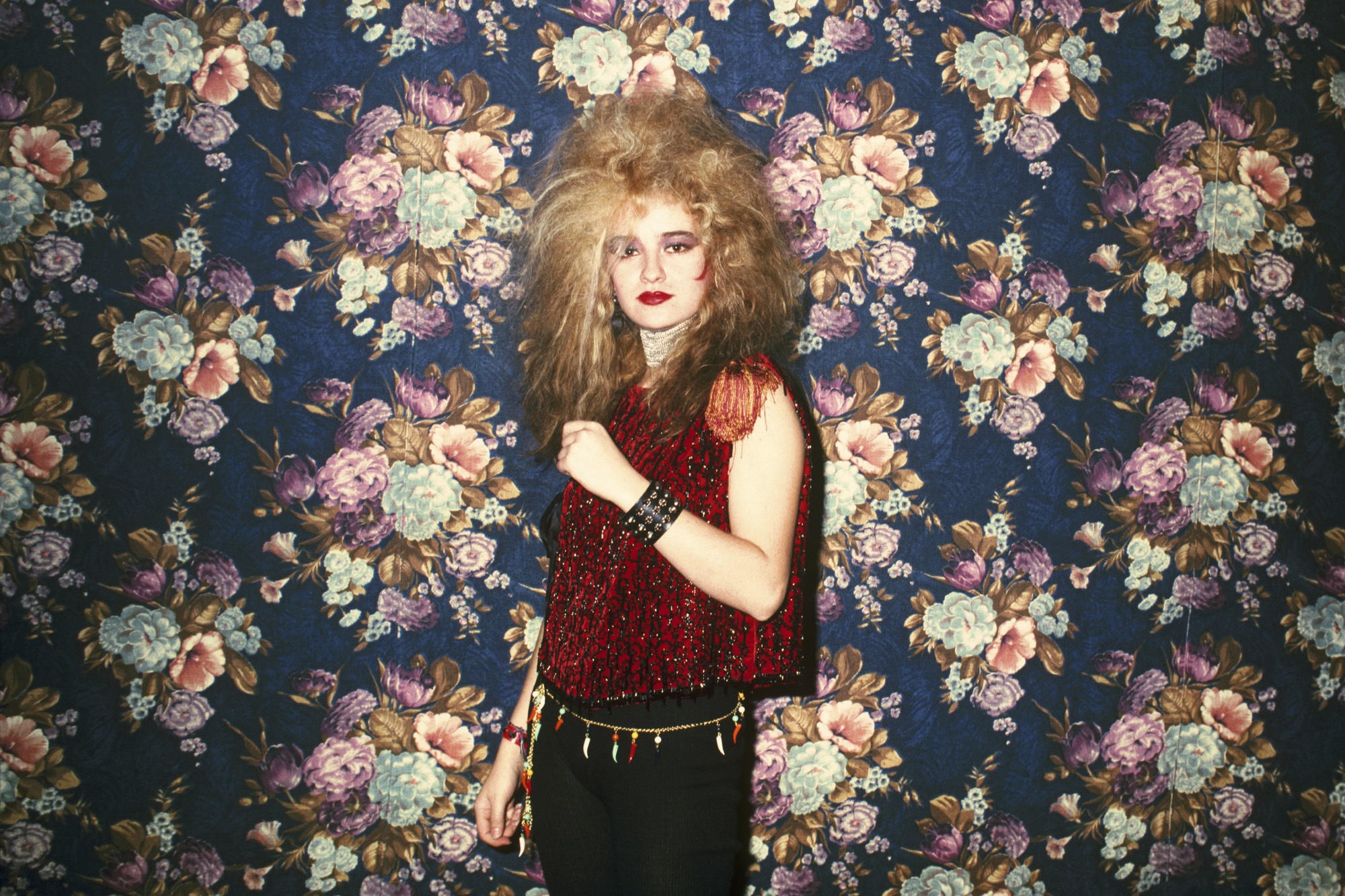
Madrid 1978. Spain was coming out of dictatorship and its capital experienced a prodigious decade that shook the cultural and artistic landscape. That revolution in technicolour that made Madrid the headquarters of fun and creativity was called La Movida. Do you remember it?
Now an exhibition organized by the Foto Colectania Foundation in Barcelona recalls those experimental years under a rebellious title: ‘La Movida. Chronicle of an agitation ‘. This recently opened exhibition offers an approach to this historical moment from the perspective of photography, addressing radically different areas and perspectives. The exhibition, presented in summer at the prestigious Les Rencontres d’Arles festival, focuses on the work of four photographers who immortalized some icons of La Movida: Alberto García-Alix, Ouka Leele, Pablo Pérez-Mínguez and Miguel Trillo. These professionals lived this cultural revolution in person, sometimes lived together, sometimes came across each other or simply found themselves in different environments, but the interesting thing about the exhibition is how each of them immortalized it from a different perspective, showing different faces of the same reality.
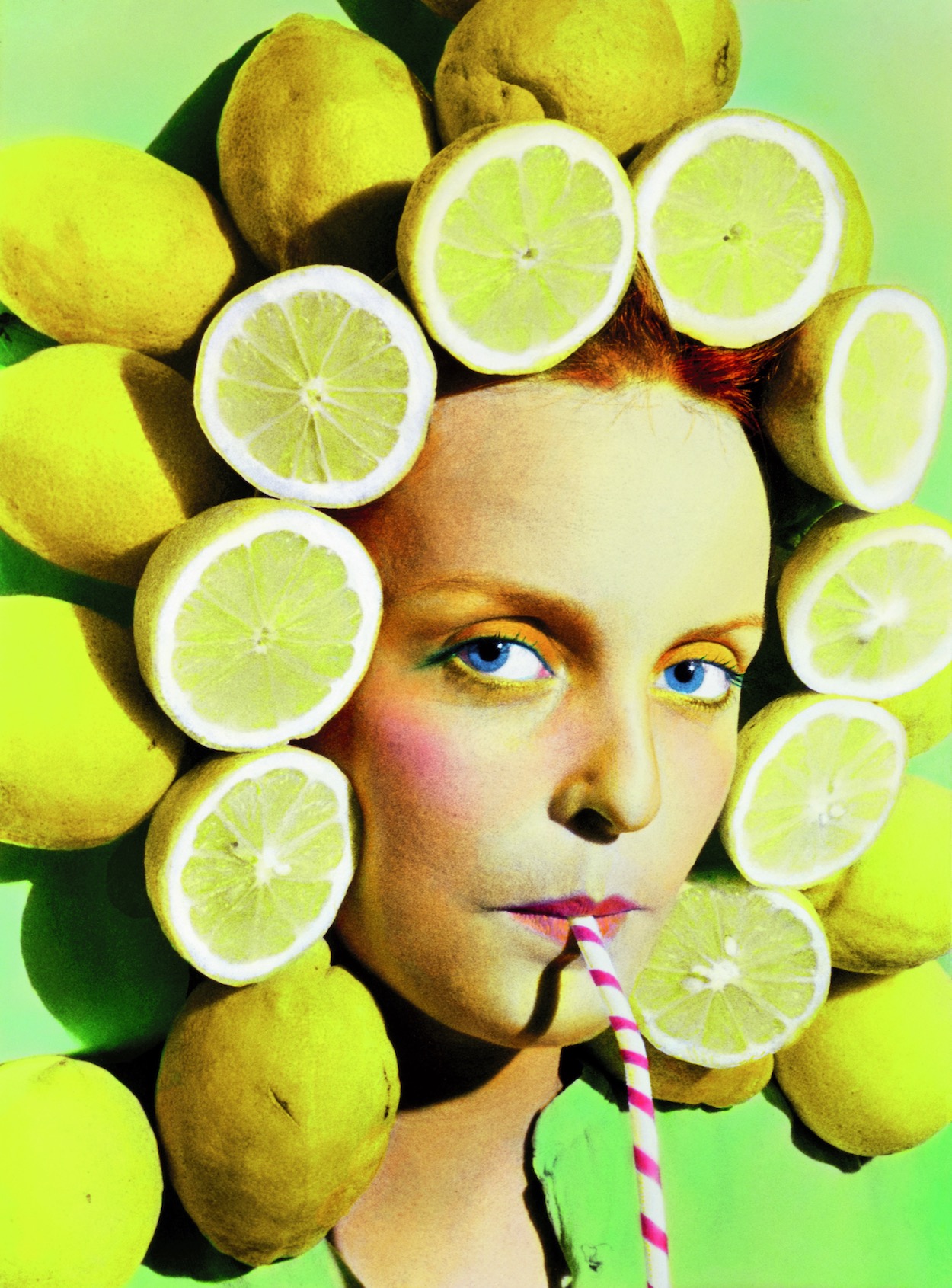
Thus the exhibition presents this polyhedral look at the movement, in which extraordinary photographs can be contemplated that bear exceptional testimony to the time. Authentic visual jewels such as García Alix’s vintage photographs that testify to how the street was transformed and also the characters that inhabited it; Ouka Leele’s dreamlike and coloured snapshots full of freshness and imagination; the rebellious perspective of Pablo Pérez-Mínguez in whose study all the main characters were photographed under the slogan “Everything goes” and the urban tribes of Miguel Trillo who portrayed the freedom of the street and the youth of the moment, grouped according to their way of dressing and their behaviour. The exhibition also includes a selection of materials such as vinyl, fanzines or posters, as well as a projection of musical performances that complement the personal universes of the photographers.

The uniqueness of La Movida
La Movida was a unique and spontaneous era of contemporary Spanish culture. It took place in Madrid at the end of the seventies and extended throughout the 80s, coinciding with the mayoralty of Enrique Tierno Galván. After several decades of dictatorship and ostracism the Spanish transition saw a new generation fascinated by modernity and the idea of the new, which would crystallize in creators from different fields such as music, fashion, film, painting or photography . This cultural heyday was distinguished in other European cities as a phenomenon that directly connected with the daily life of the moment.
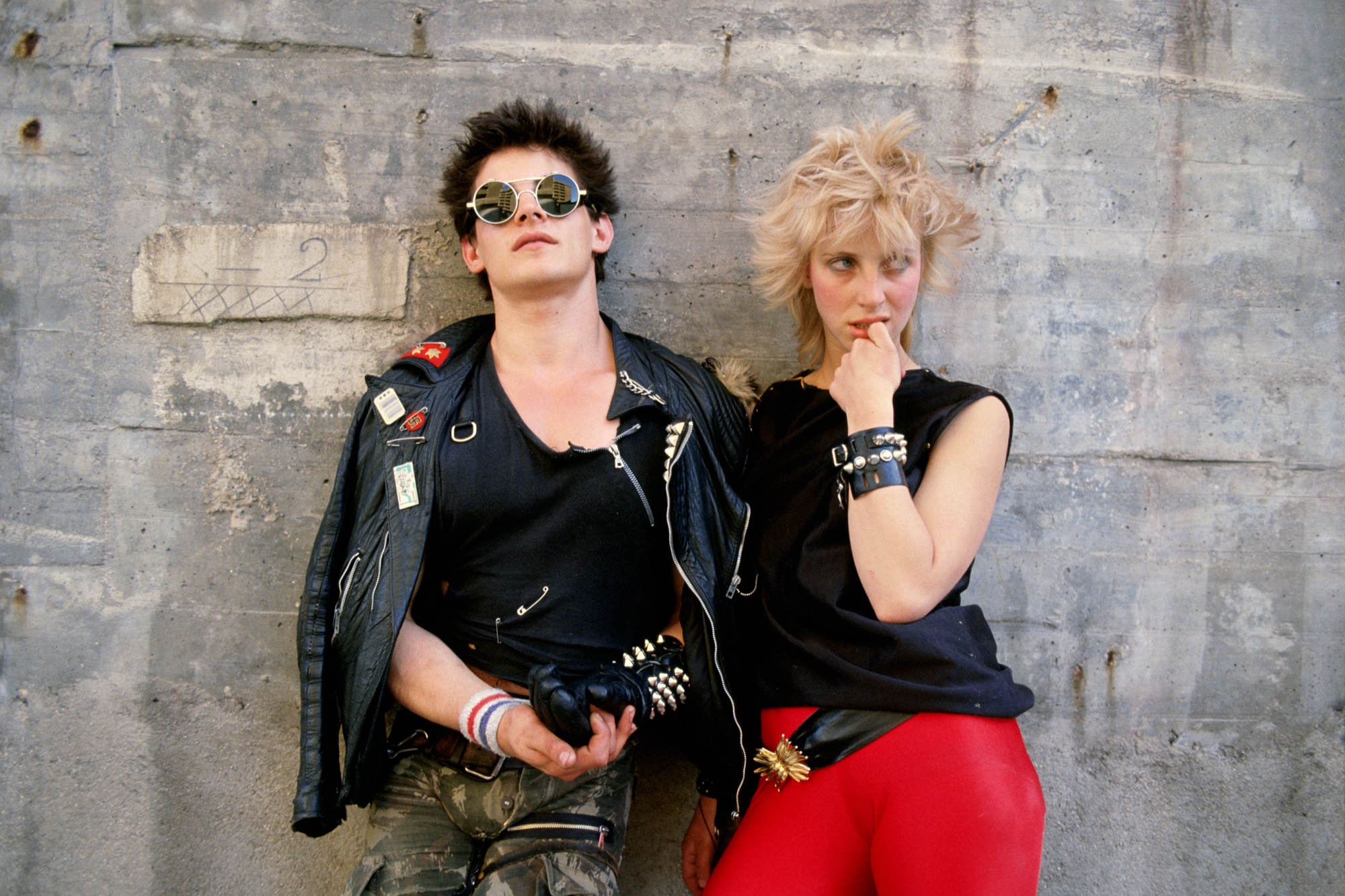
The exhibition ‘La Movida. Chronicle of an agitation ‘ can be visited at the Foto Colectania Foundation in Barcelona until mid-February. A look back at the past of the most fun and free city of the moment.
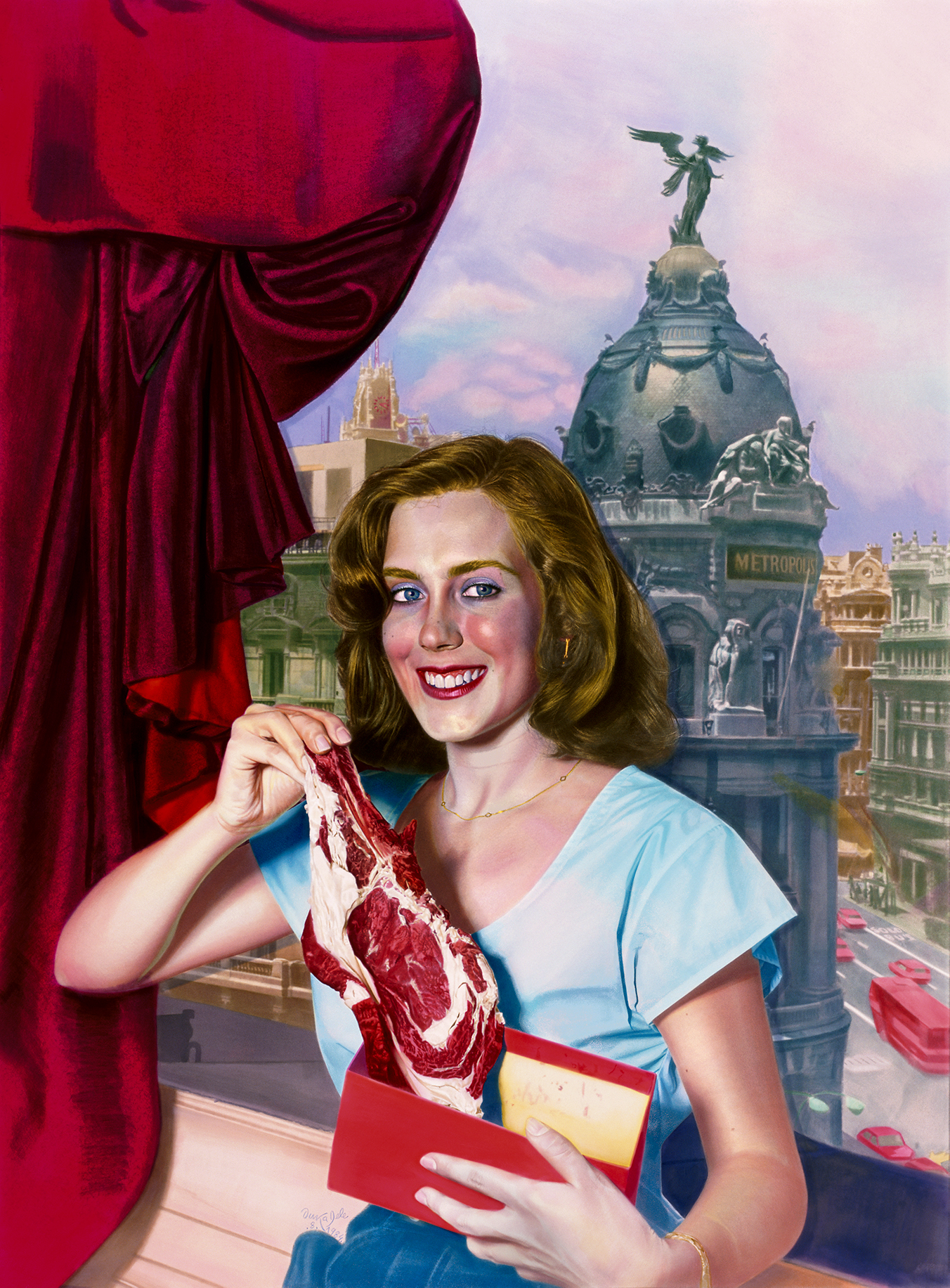
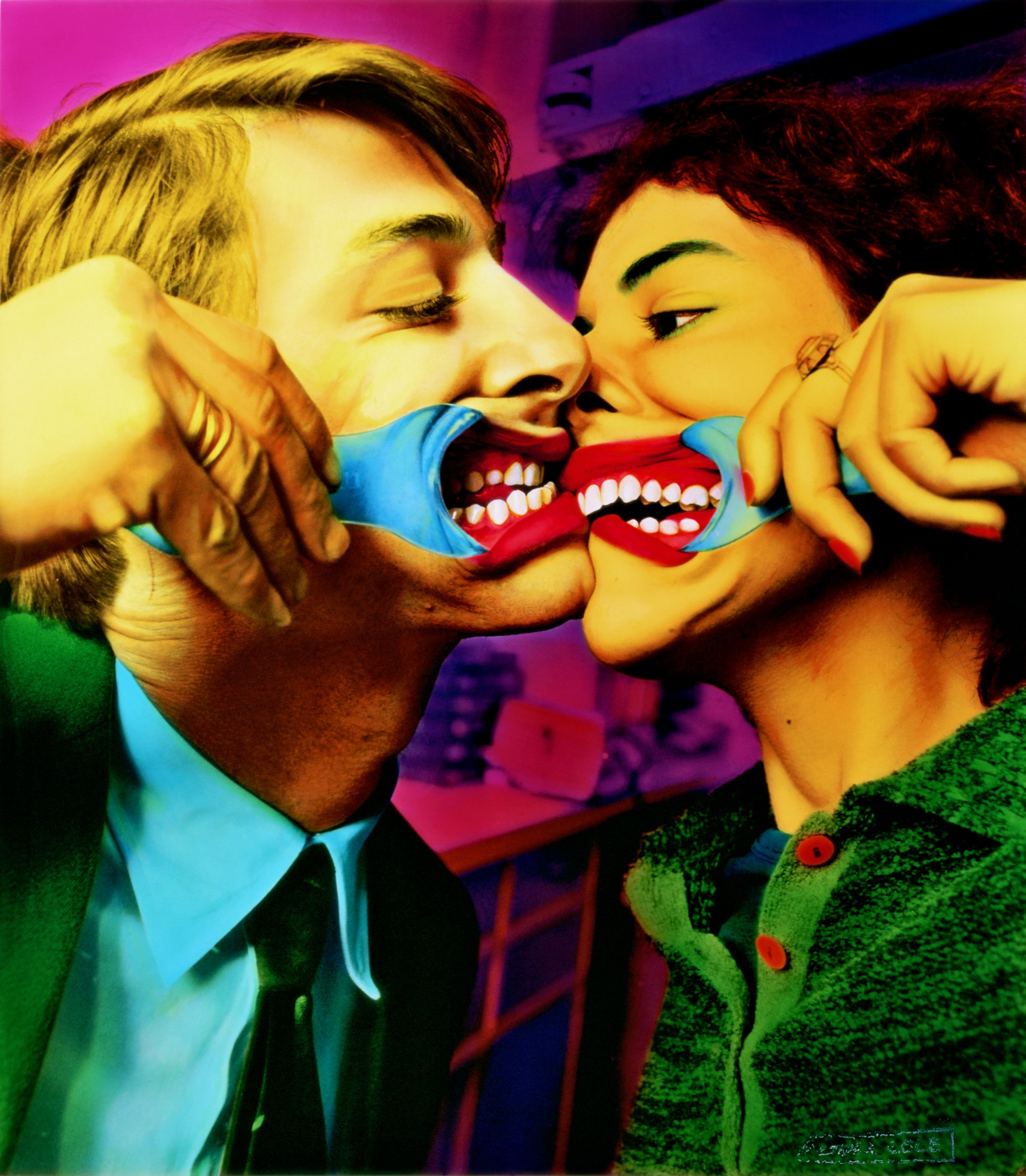


Jueves 05 septiembre 2019
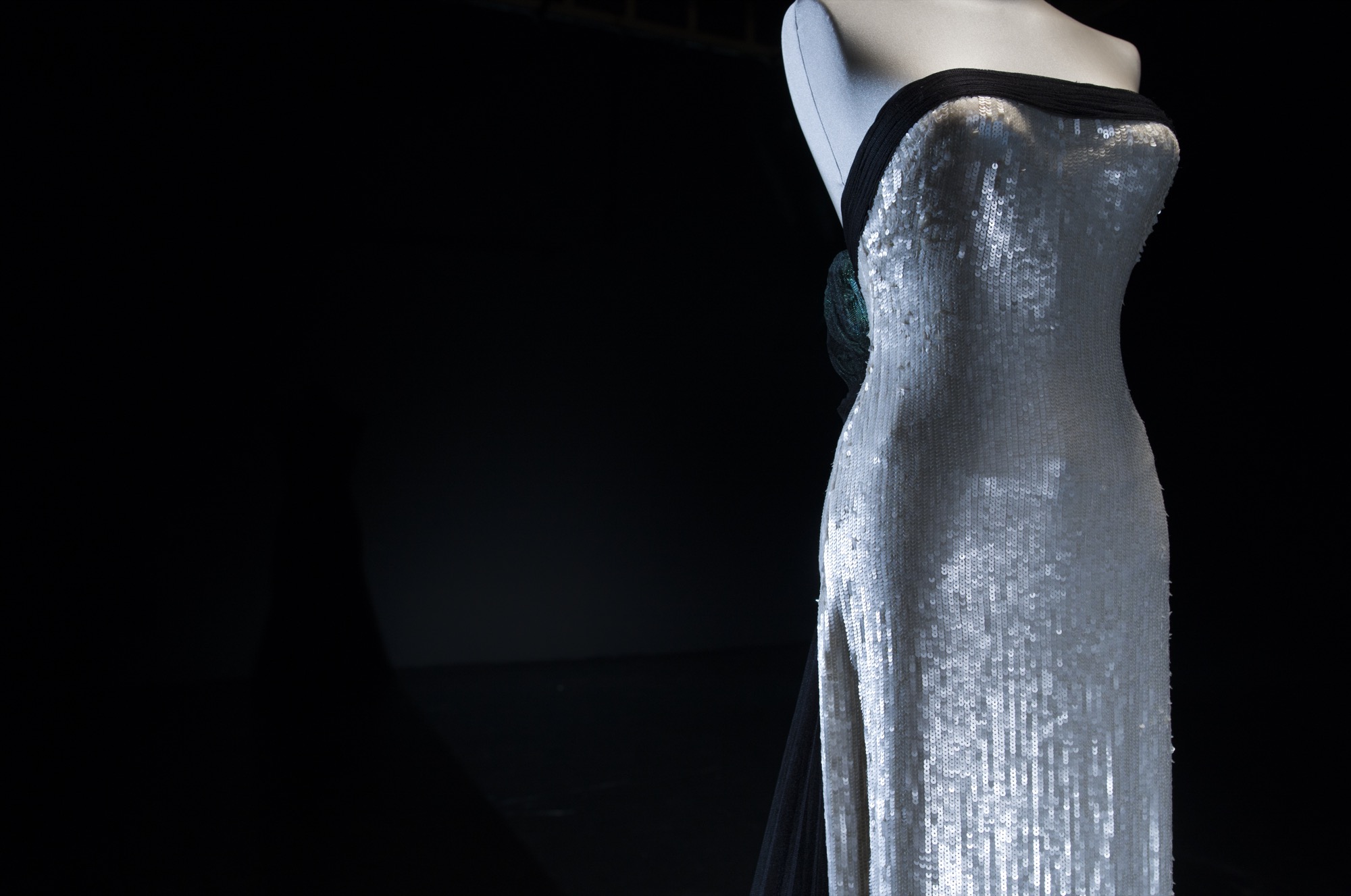
We kick off the season talking about another exhibition that extols the female figure and gives a new vision of the “body-fashion” relationship. Its title is evocative: ‘El Cuerpo Inventado’. (The Invented Body). A sample organized by Collectors Collective in Madrid that highlights the aesthetic canons that have remained in fashion since the early twentieth century to the present day, providing a new dialectic of evolution and changes that are especially appreciated in women’s clothing .
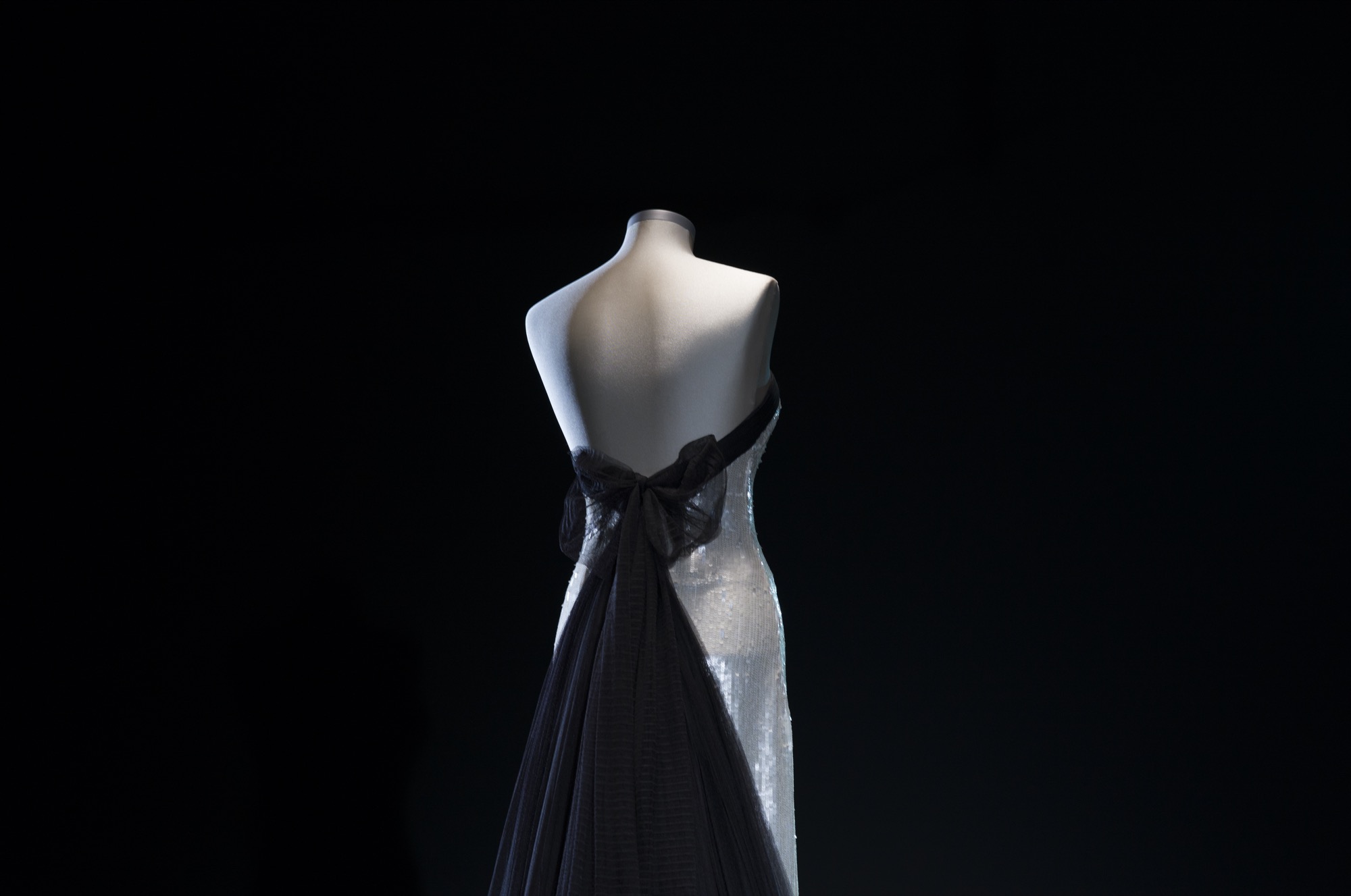
4 silhouettes and a century
The silhouette is responsible for creating the spirit of time beyond colours, fabrics or trimmings. It is precisely the silhouette that captures the aesthetic canon of an era.
In spite of its apparent richness and variety, the history of Western feminine dress has been repeating its forms throughout the centuries: there are only a handful of silhouettes with which the dressmakers have invented their creations. For example and focusing on the last 100 years, the silhouettes that have had more relevance in the twentieth century are four: tubular silhouette, triangular silhouette and double triangle silhouette, globular silhouette and anatomical silhouette. In addition, all of them have a history in previous centuries. Of course: the prevalence is not exclusive. The silhouettes can coexist in time, although the protagonism of one of them will be the one that defines the era.
In turn, the exhibition also proposes a reflection on “the tyranny of the invisible” and the naked body, a movement that has been consolidating in recent years to reach today unsuspected limits.
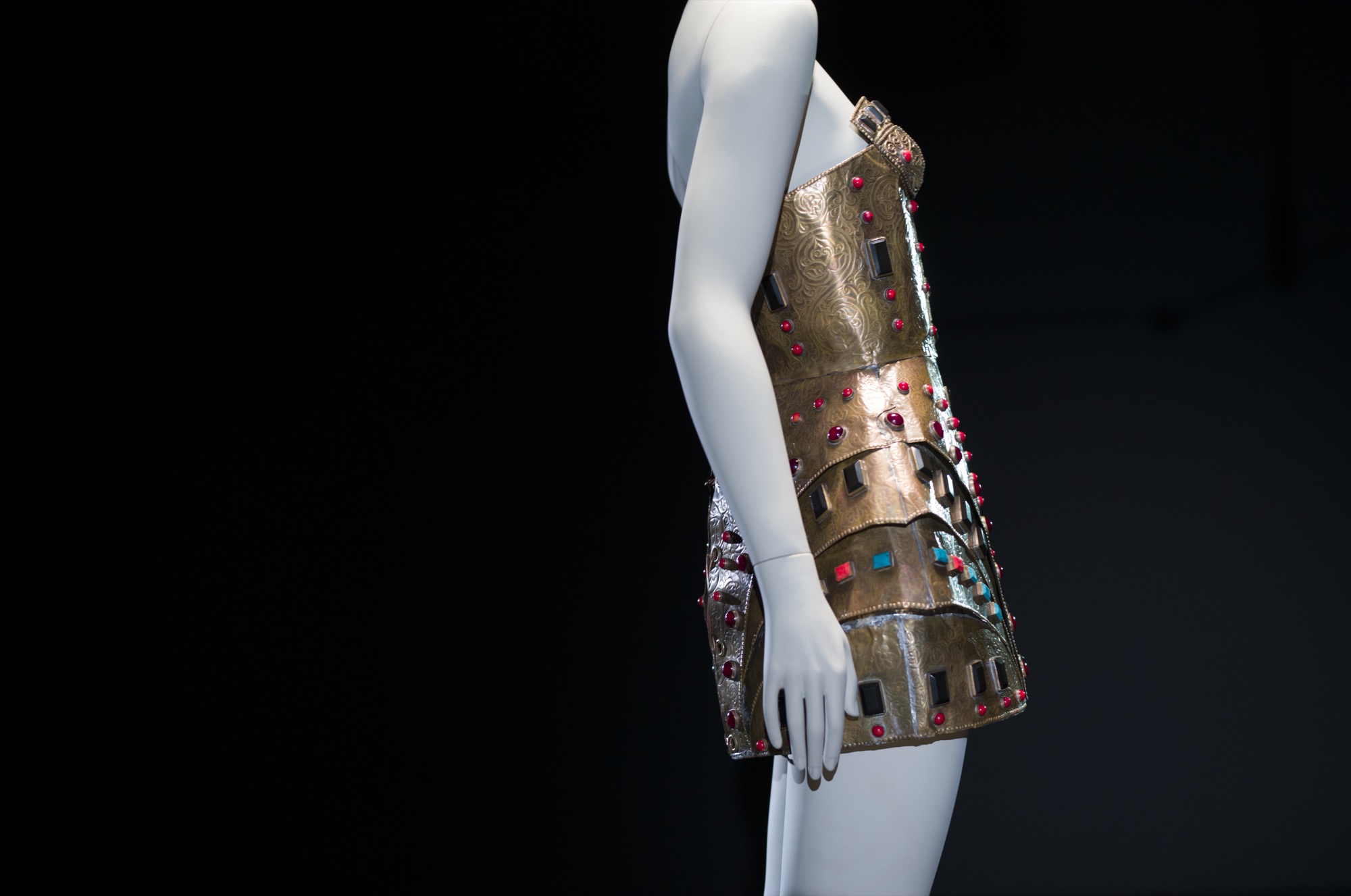
Collections and creators
‘The Invented Body‘ is formed of pieces by important fashion collectors (Antoni de Montpalau, Quinto, Maite Mínguez and López-Trabado), as well as three prestigious international renowned museums such as the Costume Museum of Madrid, MUDE : Lisbon Design and Fashion Museum and the Fashion Museum of Santiago de Chile.
The exposed designs are part of the most relevant names on the international scene such as Lanvin, Chanel, Christian Dior, Givenchy, Mainbocher, Versace, Yssey Miyake, Azzaro , Azzedine Alaïa , Pierre Cardin , Yves Saint Lauren, Pucci, Christian Lacroix, Commes des Garçons or Gucci. There are also first-class Spanish designer models such as maestro Cristóbal Balenciaga, Pedro Rodríguez, Lorenzo Caprile , Ágatha Ruiz de la Prada, Jesús del Pozo, Leandro Cano, Ernesto Artillo , Antonio Velasco or Josep Font.
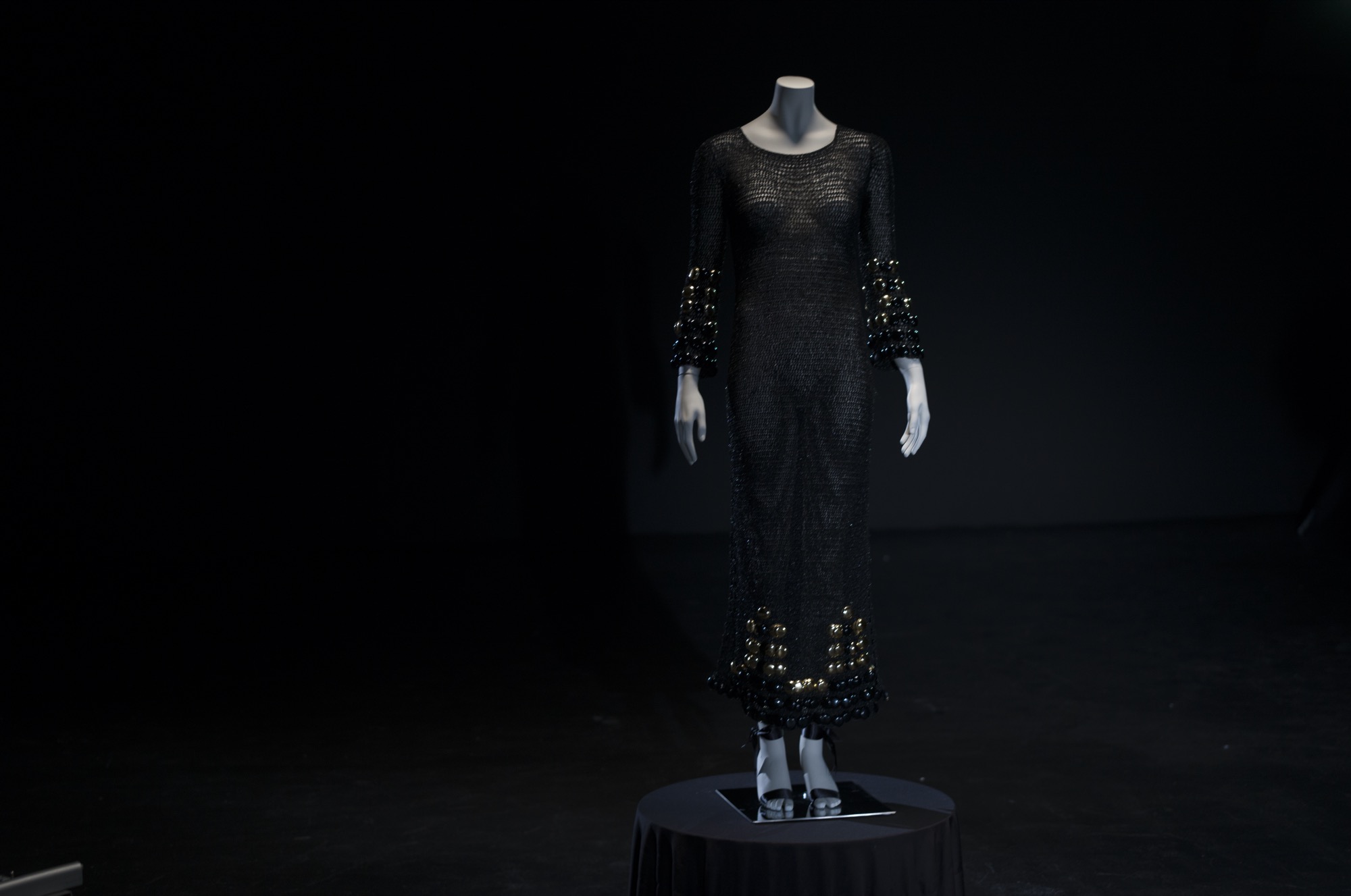
Trendy icons of yesterday and today
Throughout the history of the suit, fashion has used influential people to spread itself. Until the nineteenth century, it was the aristocracy who used to have this mission, but at the end of that century this trend begins to change and it is women in the field of culture and entertainment who become fashion prescribers for the dissemination of fashions. Next to a specific silhouette there is usually an influential woman legitimizing it: how could we disassociate the silhouette that narrows the waist, projects the breasts and widens the hips of actress Marilyn Monroe?
Therefore, the exhibition also includes the role of these famous women who have consolidated the different aesthetic canons, taking a tour of the most influential names in fashion of the twentieth century, with dresses that belonged to Madonna, Claudia Schiffer, Rita Hayworth, Audrey Hepburn, Sophia Loren, Lady Gaga, or even her majesty Doña Letizia, among other relevant women.
‘The Invented Body ‘ of Collectors Collective opens next Thursday, September 12th at General Perón Avenue in Madrid and can be visited until December 15th.
Fotos: Alfonso Ohnur
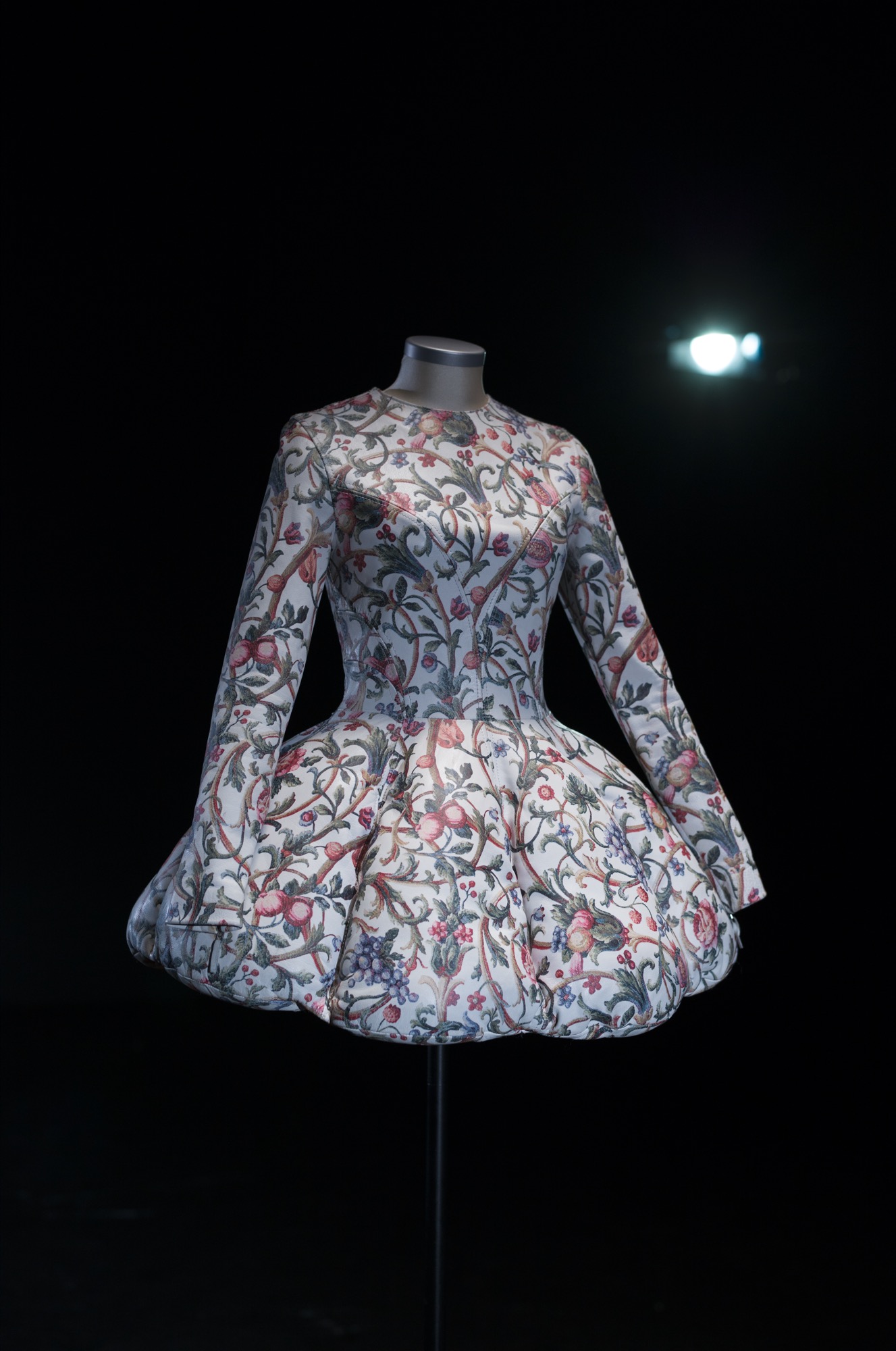
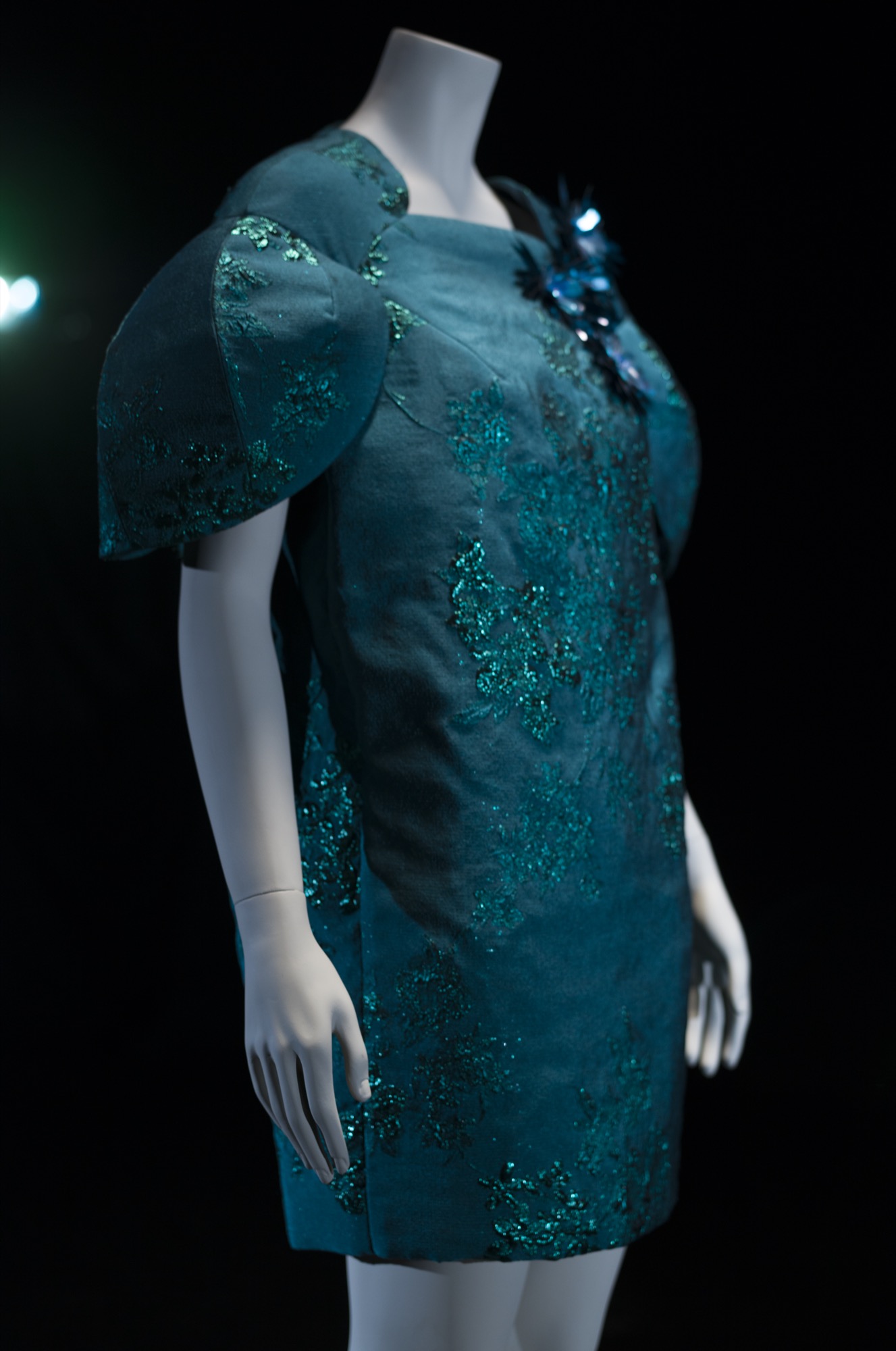
Sorry, this entry is only available in European Spanish.

After Barcelona, it has been Madrid’s turn for catwalk shows. Again, Gratacós has been present in some creations for the upcoming season thanks to the support of Spanish designers who confide in us. Coming up, we analyze some proposals seen in the 70th edition of the Mercedes-Benz Fashion Madrid in the Spring-Summer 2020 collections. Do you recognize the fabrics?
Dominnico The new generation
The winner of the Mercedes-Benz Fashion Talent, Domingo Rodríguez presented the award-winning collection on the Madrid catwalk: ‘ Harajuku Kids ‘ is a proposal that appeals to the young people of the Z generation inspired by Club Kids , the London generation of the nineties and also In the new digital age. A proposal that also takes into account the urban tribes of Japan and is conceived as an agenda , away from labels with extravagant shapes and silhouettes that are an invitation to individualism and to one’s own character.
The Dominnico collection, with a vast range of Gratacós fabrics, is imbued with textures, sequins, rolling, tulles, overlays and volumes wrapped in a range of pastel colours. Thus, inheritance, current affairs and even future were mixed thanks to an unusual sweetness and femininity in Dominnico that advances to gain maturity in its style.
Brain & Beast: Is released from the clichés
The Brain & Beast creative team, led by Ángel Vilda, presented in Madrid the second part of their proposal based on totems and taboos, initially introduced in Barcelona. If in 080 Barcelona Fashion , Vilda criticized the clichés and conventions that people impose on themselves, in ‘ Taboo ‘ the liberation of the alter ego was shown , the projection of real desire. On the catwalk no shortage of printed message such as ‘Happiness is a lack of fear’ in the most striking garments. Iridescent and satin fabrics coexist with classics that flee from the sober appearance combined with atypical proposals that give rise to renewed styles. The scenery, as always impeccable: a disco ball presided over the stage symbolizing the totem, while the chairs placed in the middle of the catwalk symbolized the taboos.
Juan Vidal: An ode to classic beauty
The Alicante designer specialized in enhancing the femininity of women presented a collection of Renaissance dyes dedicated to the goddess Venus, a classic beauty ideal. In this way, Juan Vidal collected all the Roman and Greco-Roman references and transported them in urban and contemporary with a pure and bright proposal, which empowers women. The goddesses of Juan Vidal wear white with brushstrokes of blue and gold, until they reach rigorous black. Skirts were seen constantly throughout the show, as well as the flowing garments, the XL shirts and the suggestive volumes. We loved seeing some of our fabrics in this powerful collection!
The 2nd Skin and Co: workshop crafts
‘Atelier Madrid’ was the new proposal by The 2nd Skin Co. and refers to the location of his workshop with clear French touches. In this sense, the Spanish firm aims to merge Madrid aesthetics with the details of Haute Couture. Once again, designers Antonio Burillo and Juan Carlos Fernández seek to deconstruct patterns with a work that transform each garment so that what is traditionally hidden in a design comes to light and shapes it. This is how creations that look semi-finished look and some labels are visible. The main aspect of this collection are cocktail dresses with mini cuts, corseted bodies and voluminous skirts. The ties and floral motifs become the guiding thread of some proposals in which fuchsia color has a significant presence.
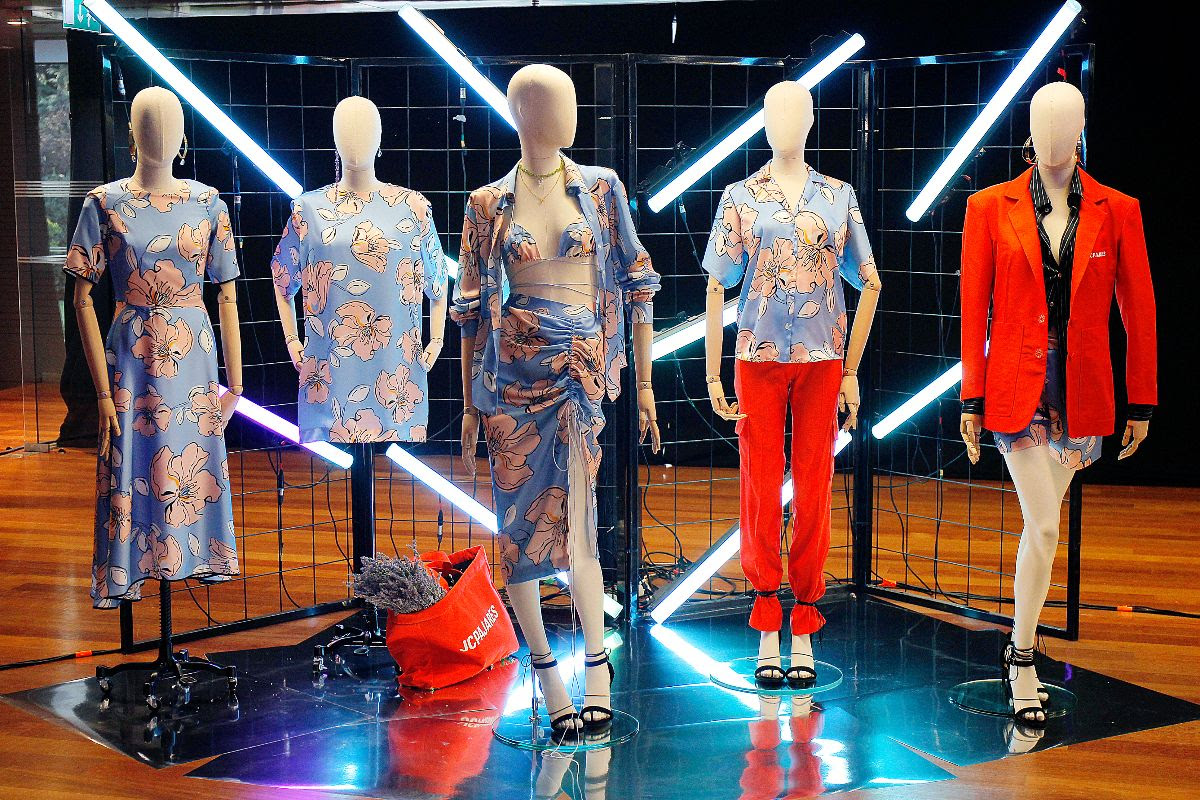
The exhibition: Juan Carlos Pajares
Within the Madrid Capital de Moda (MCDM) program, in parallel to the Mercedes-Benz Fashion Week , we make special mention to the exhibition by Juan Carlos Pajares in the Cecilio Rodríguez Gardens of the Spanish capital. That’s where the designer presented his collection ‘Yes, take the risk ‘ in a solid commitment to research new creative languages that are out of fashion conventions.
Pajares worked in collaboration with the music producer Meneo who tried to put sound to the 5 families of different ensembles that represent the 5 phases of the feelings that inspire the collection in a fun performance. The new proposal itself speaks of risk and courage through contrasting colours and fabrics such as silk organza and mikados, twill, crepes, neoprene and sequins. A collection for those who want and feel, value fashion, but, above all, that end up listening to that inner voice and express themselves with it.
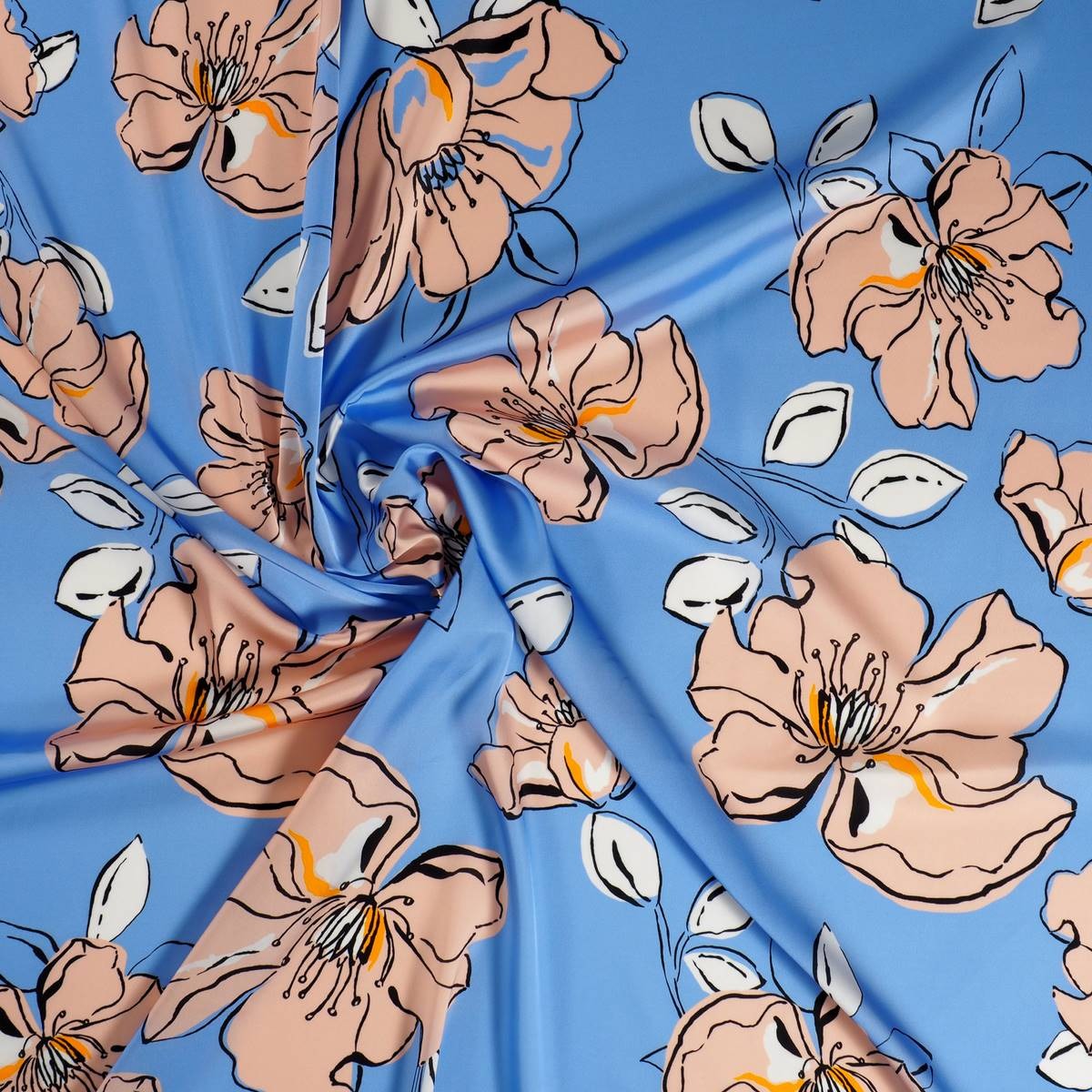

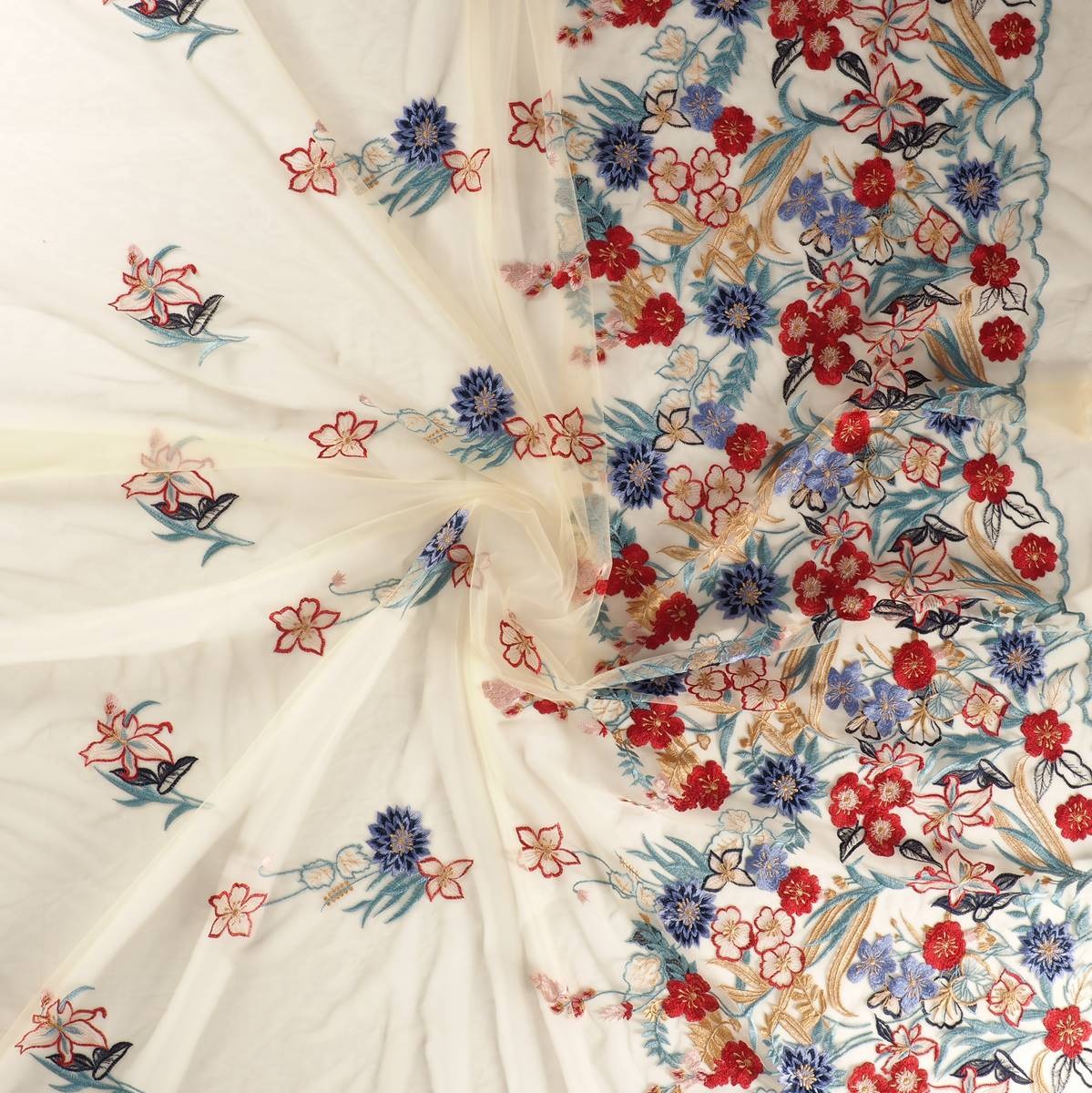
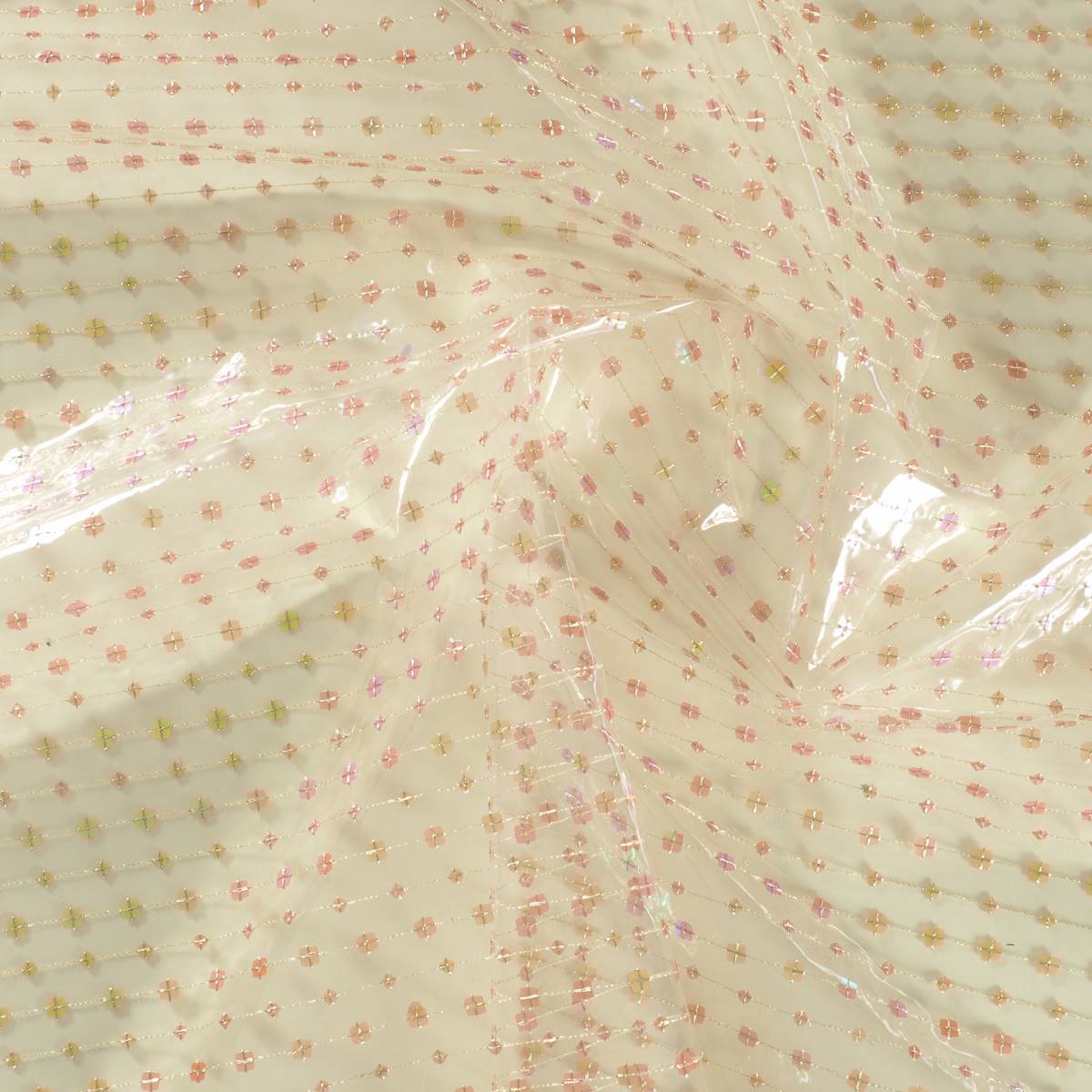
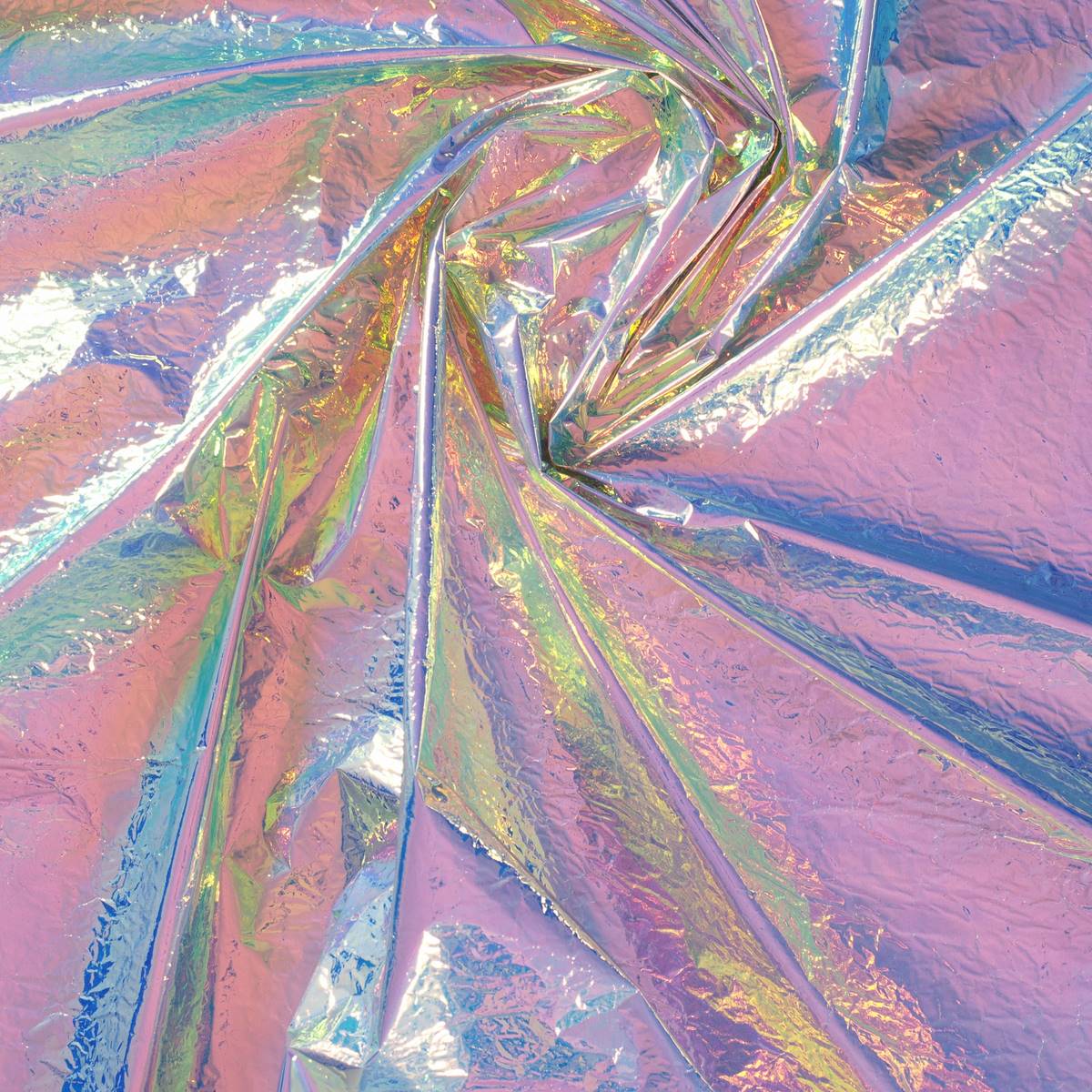

 The retail sale revolution
The retail sale revolution


















































